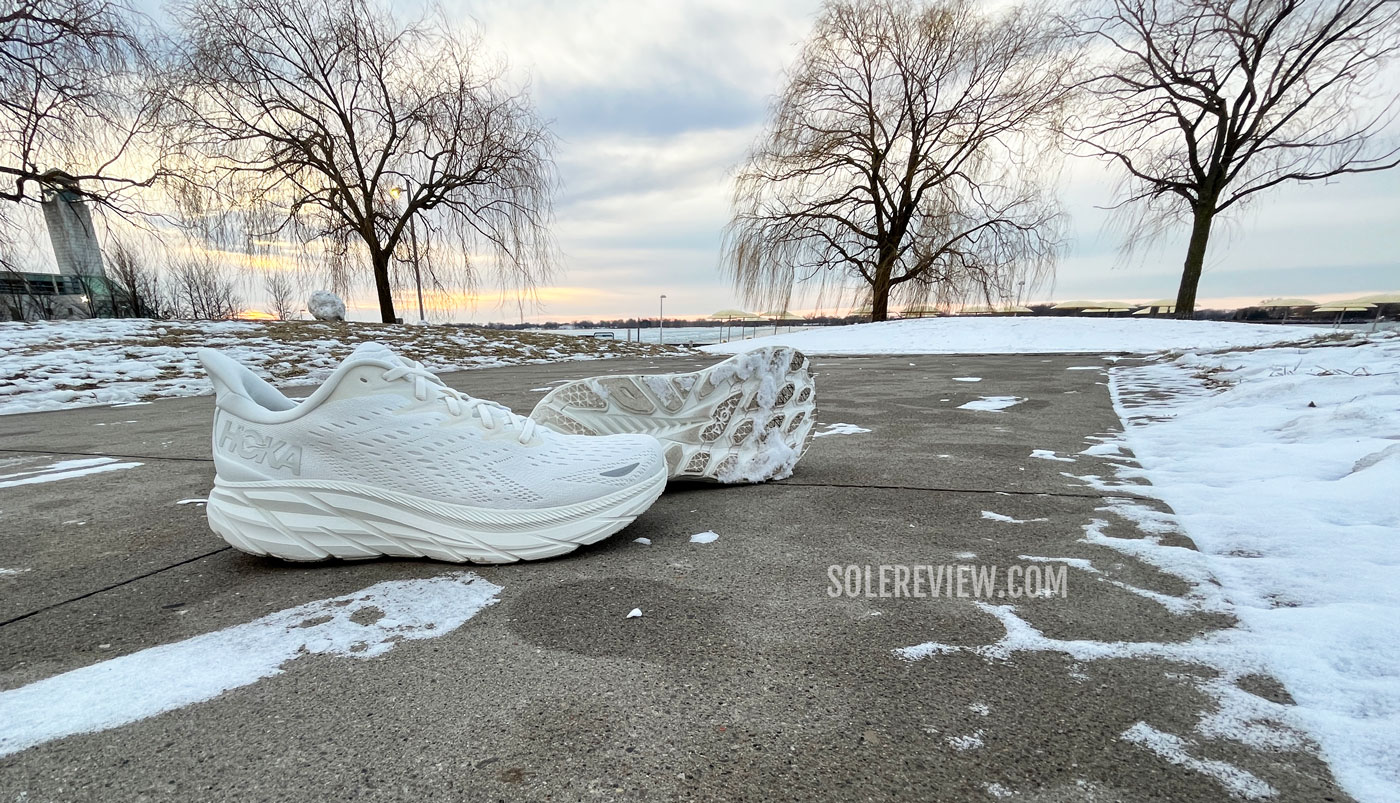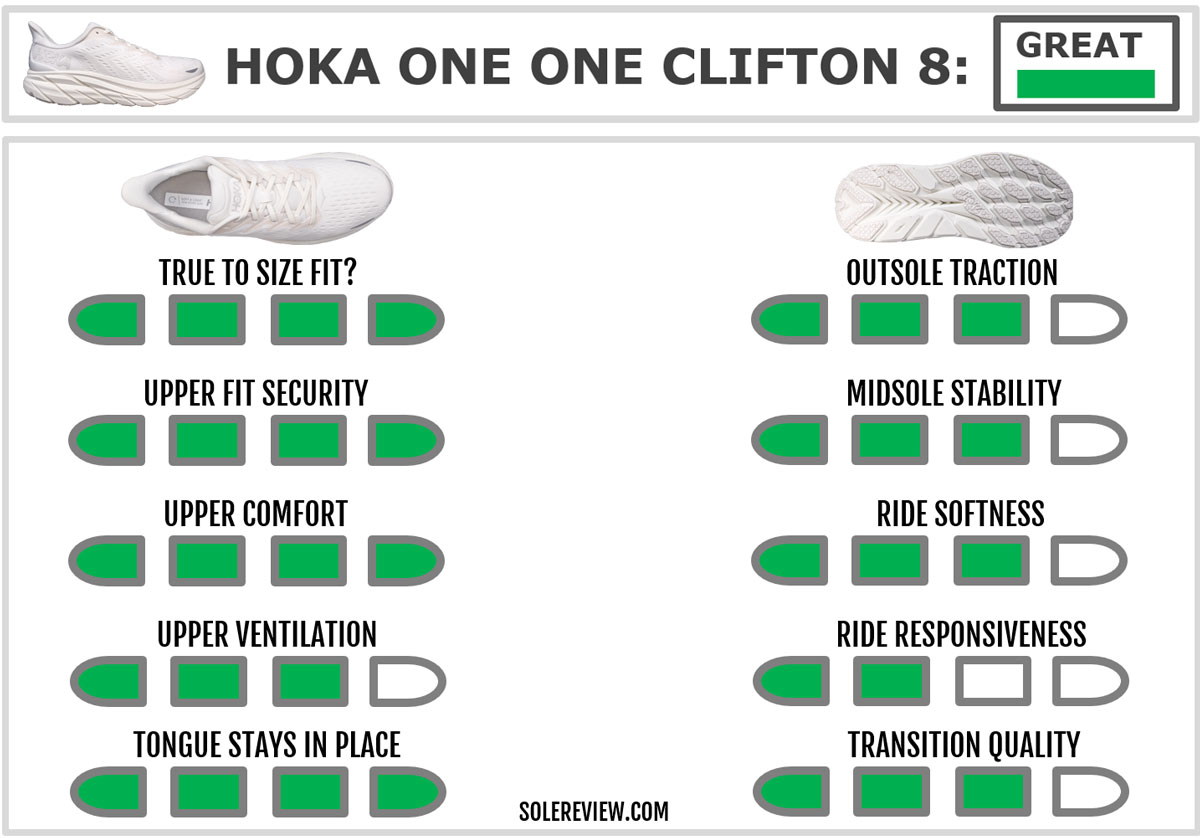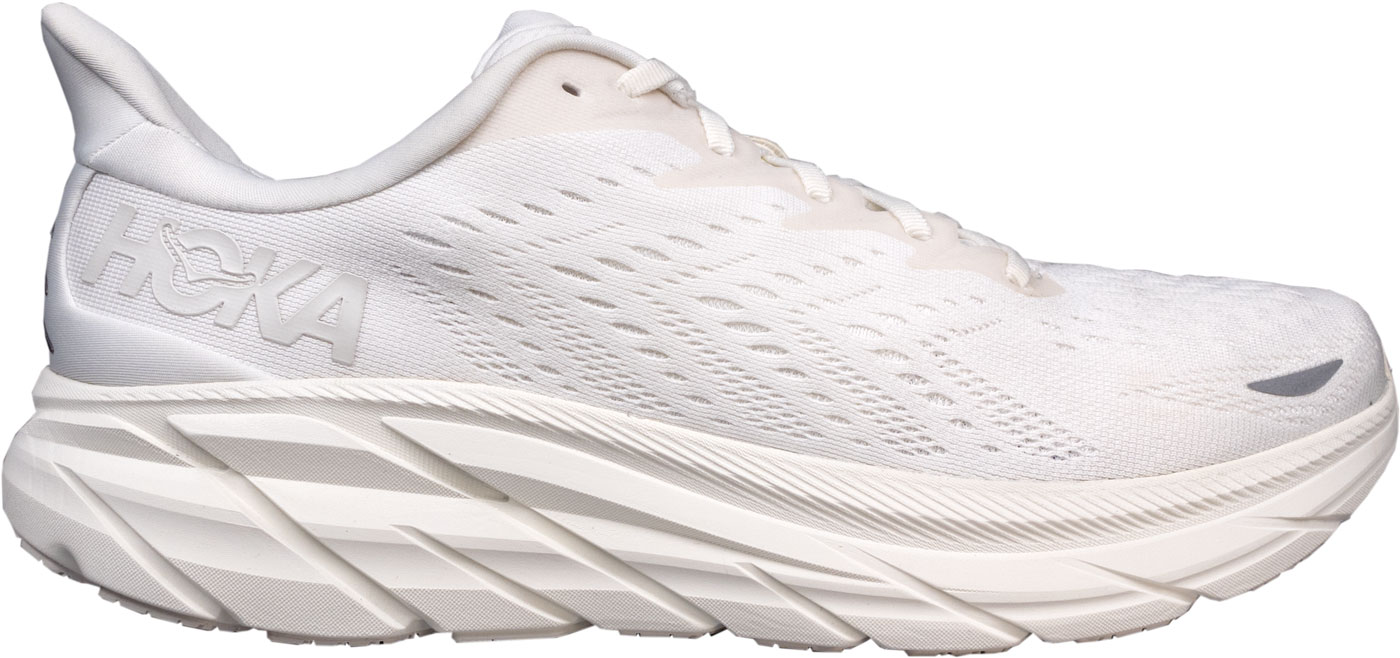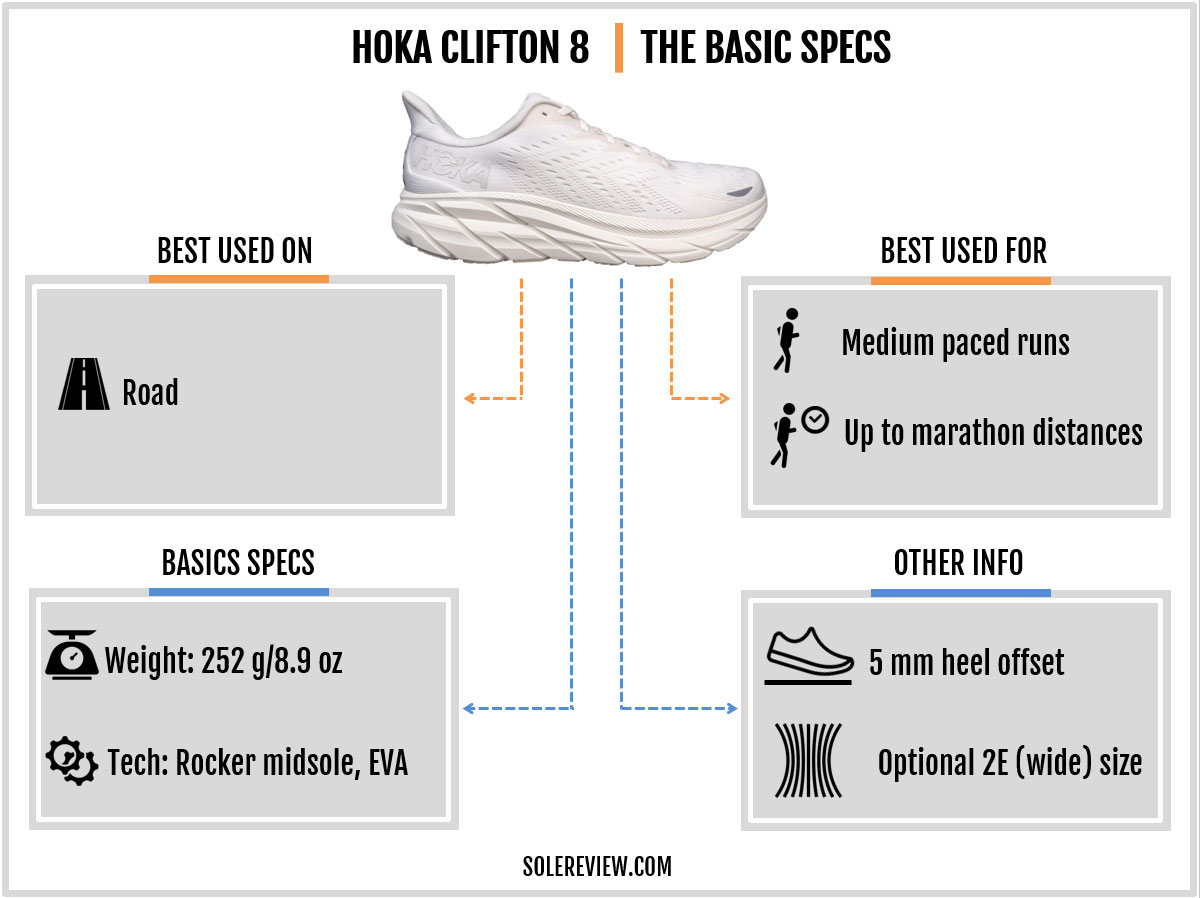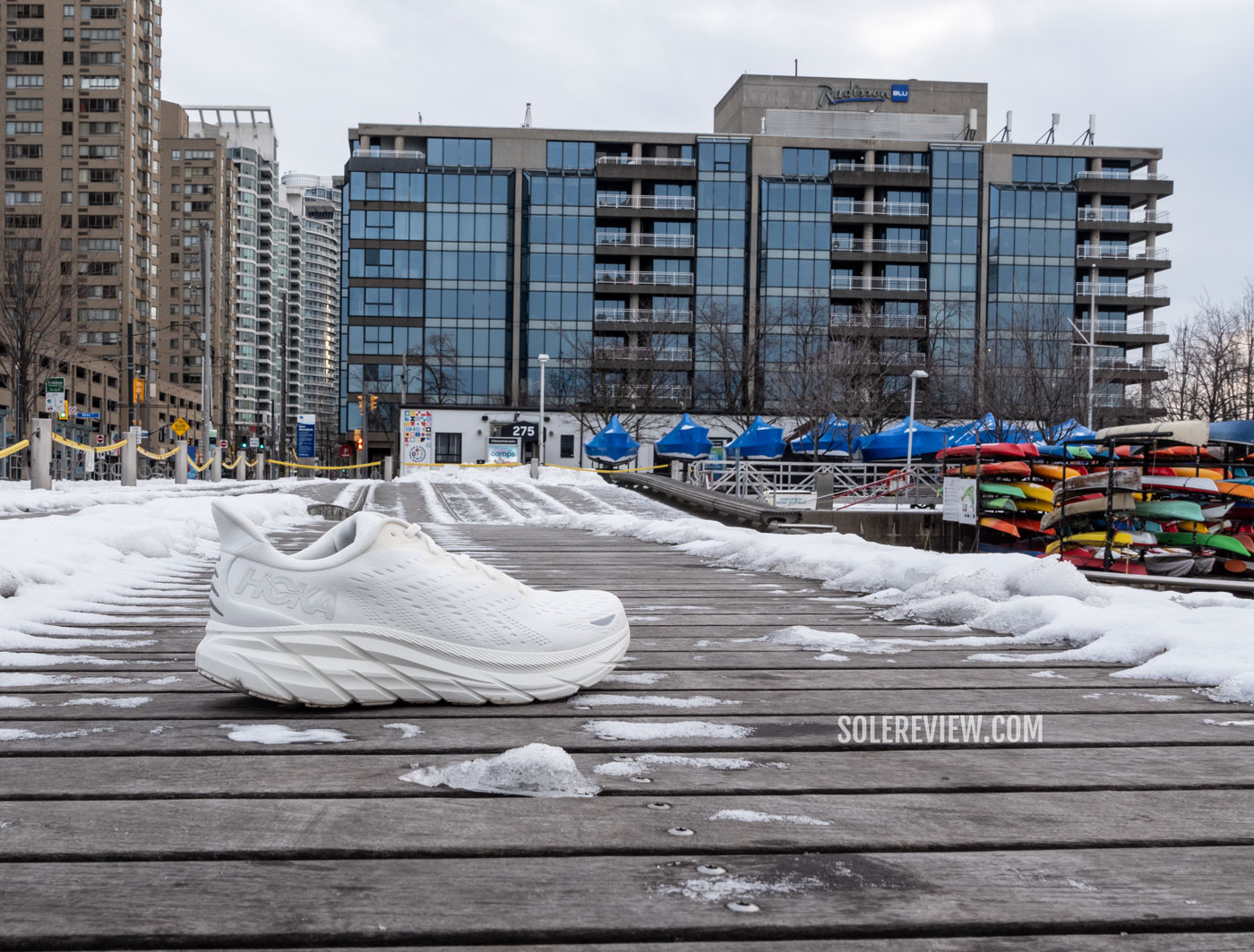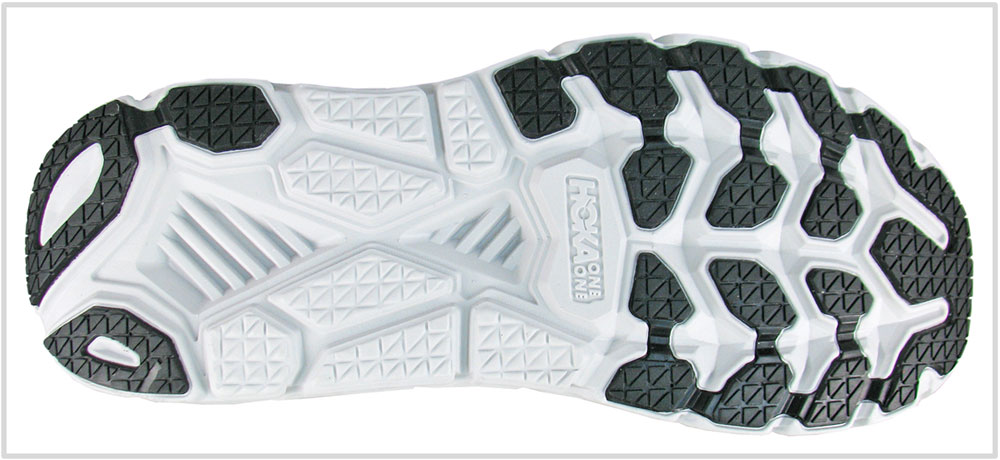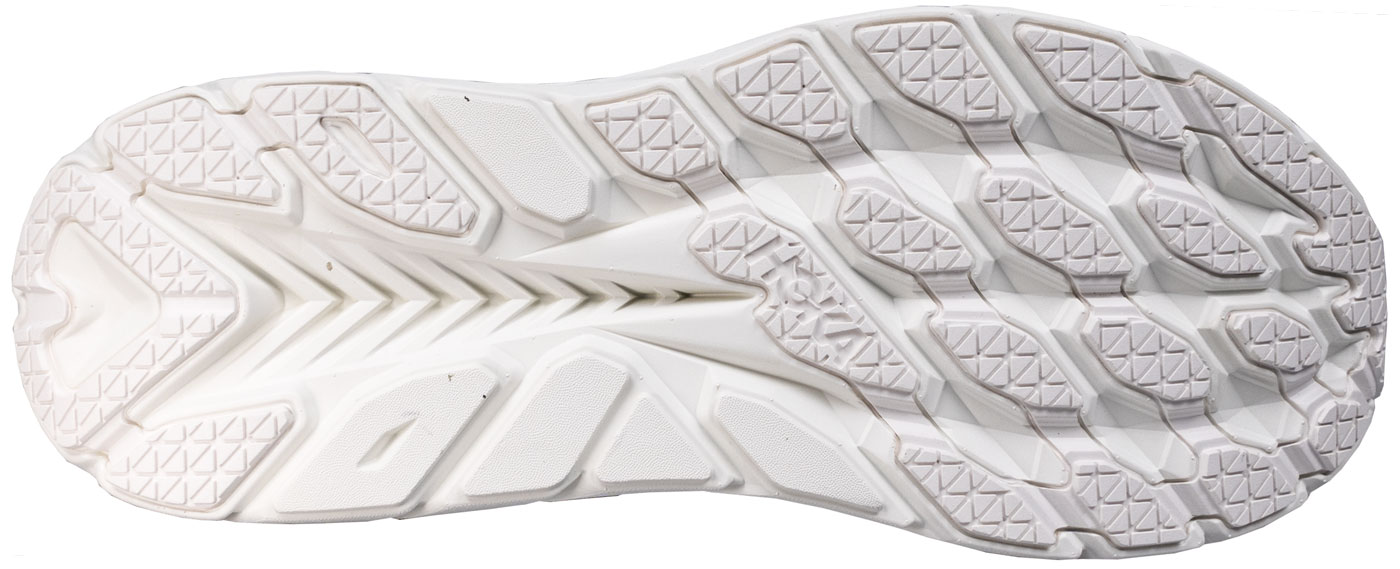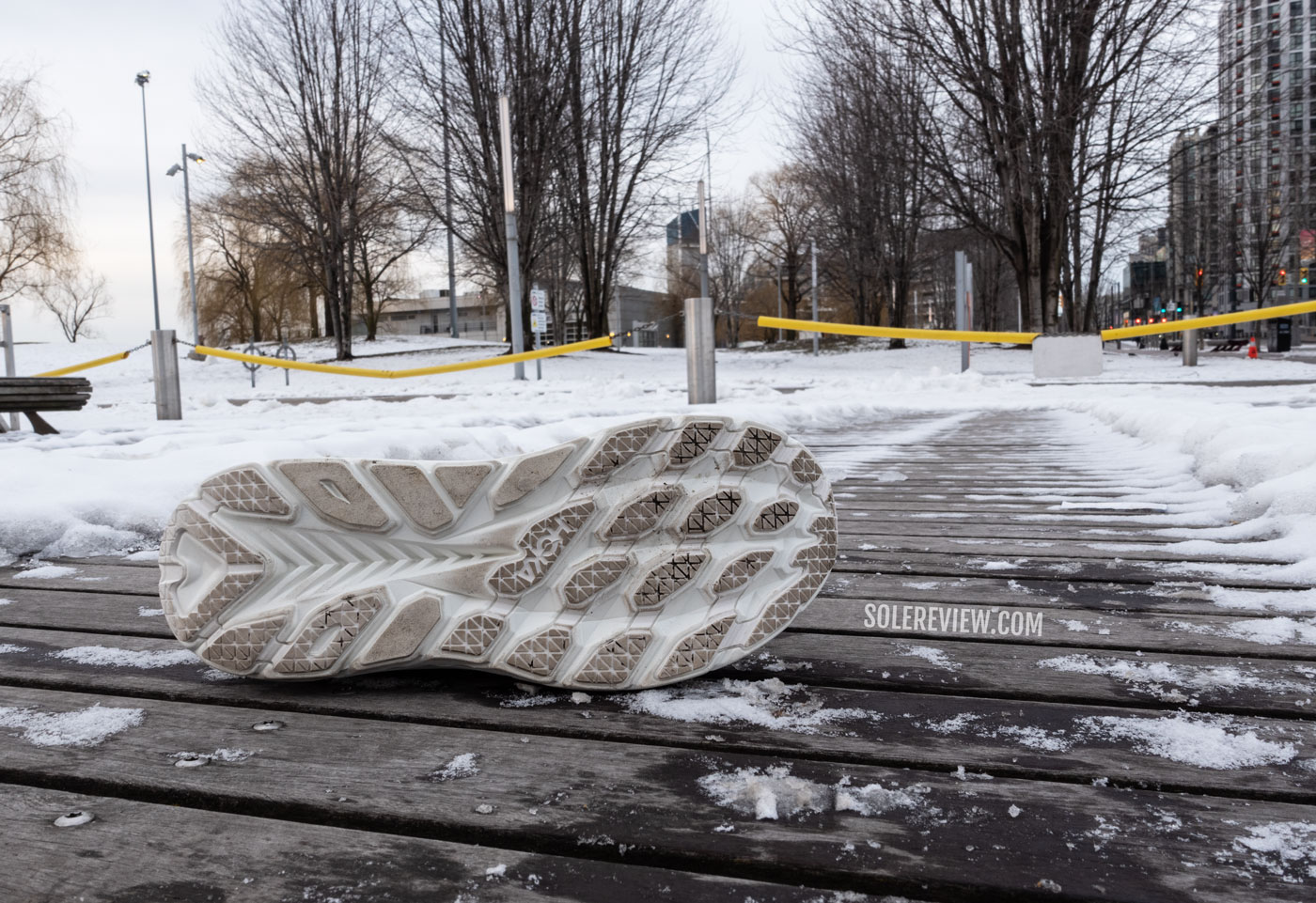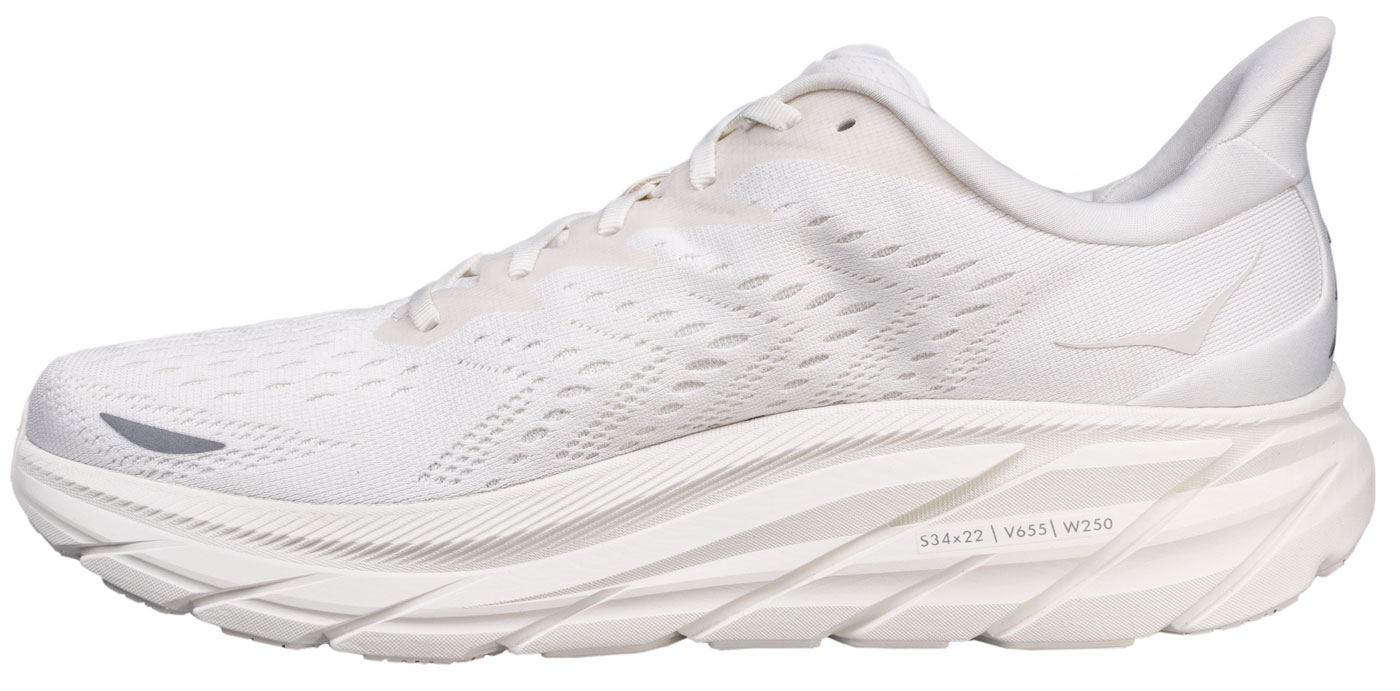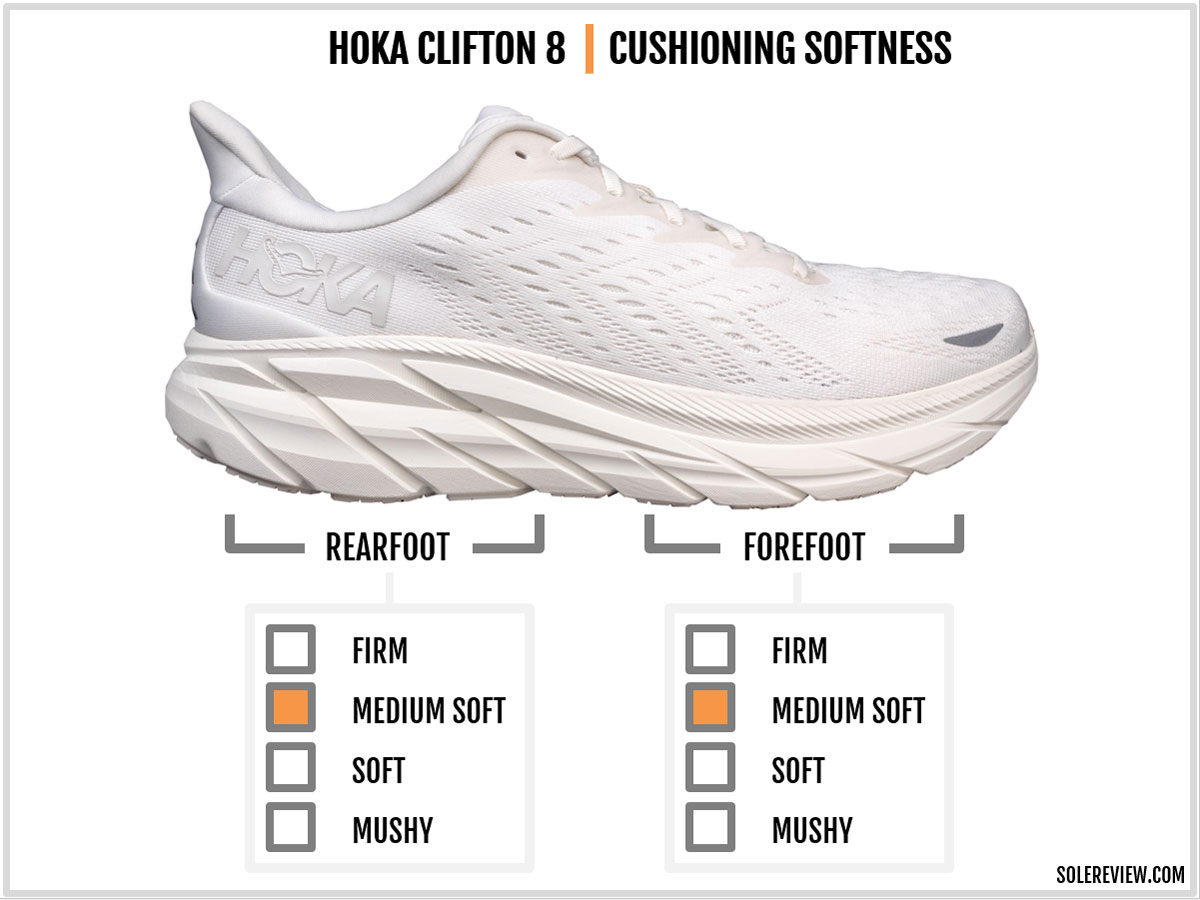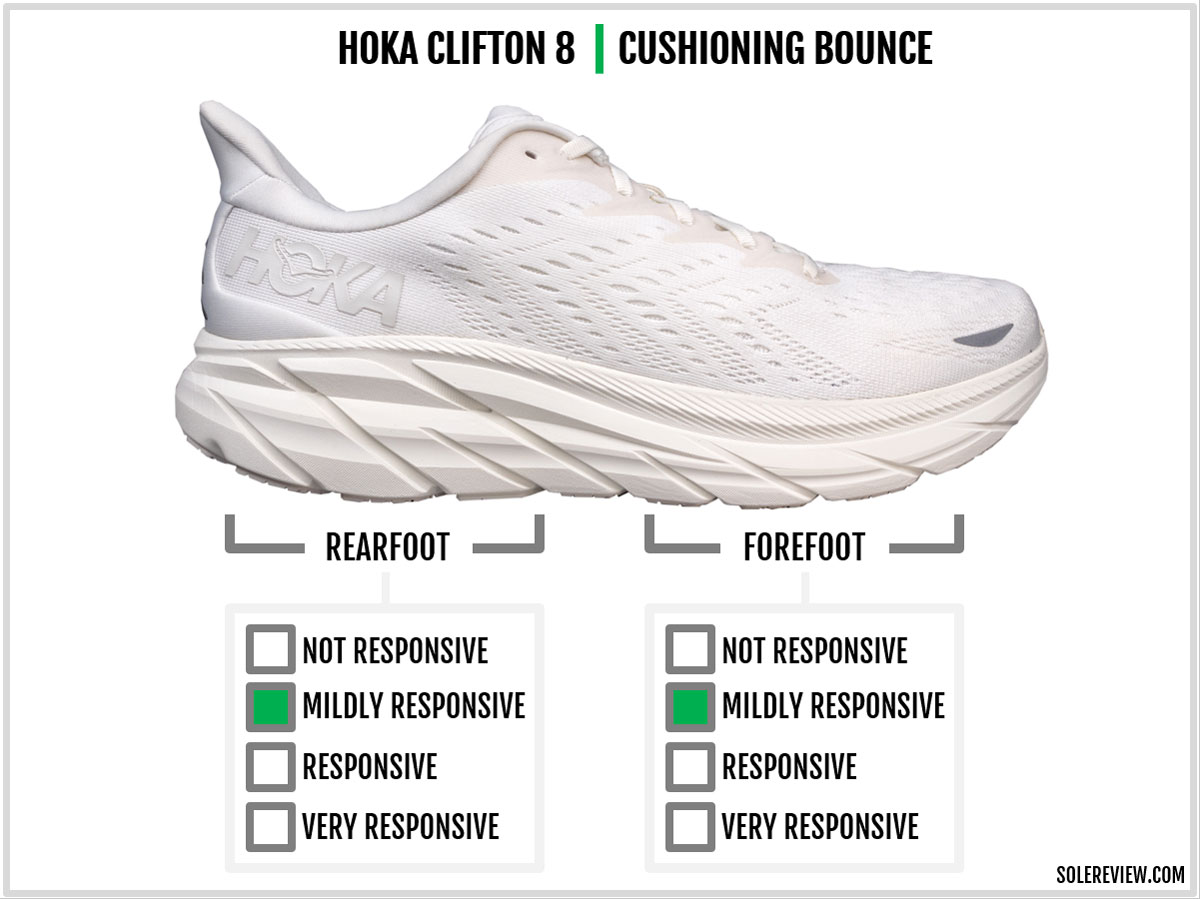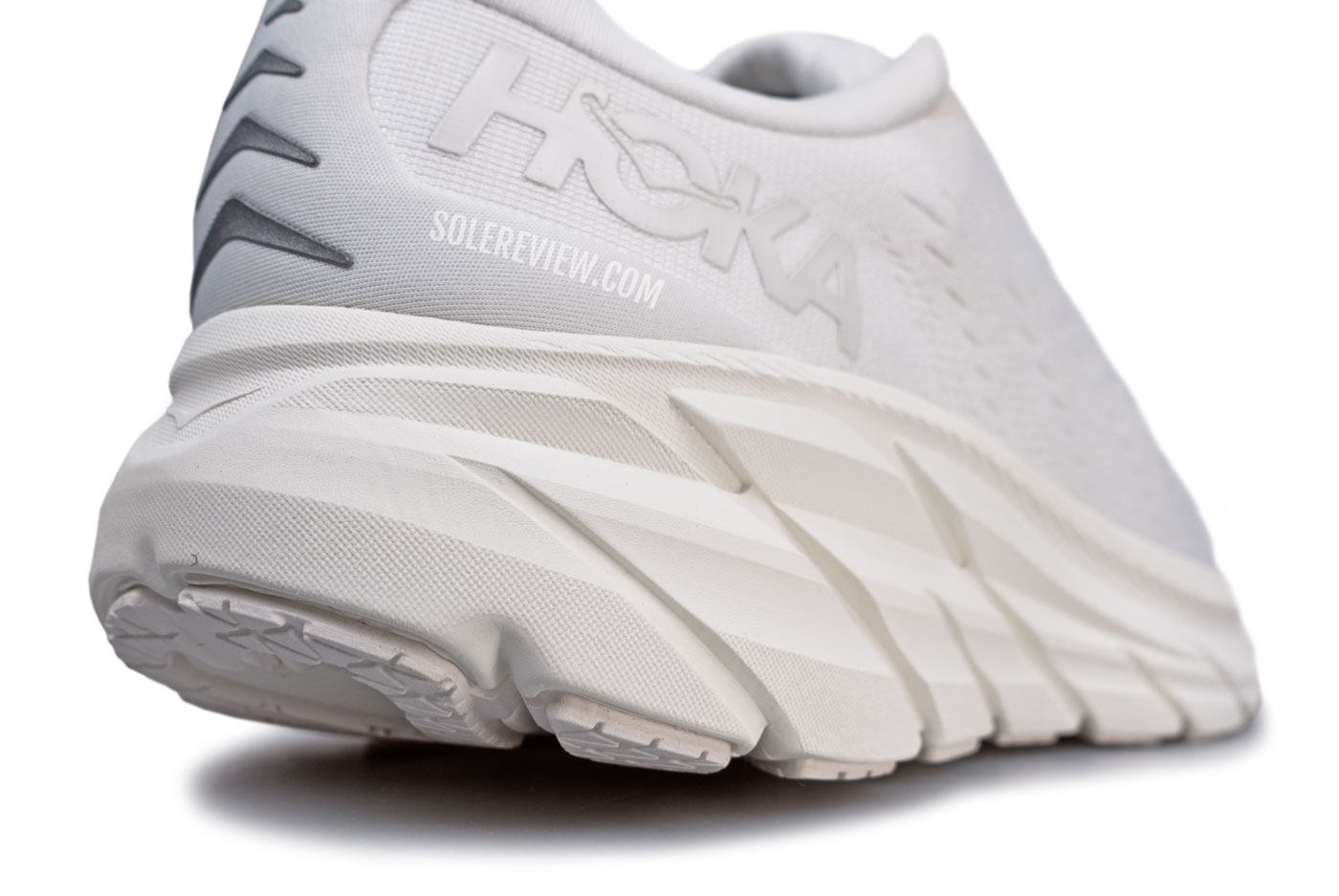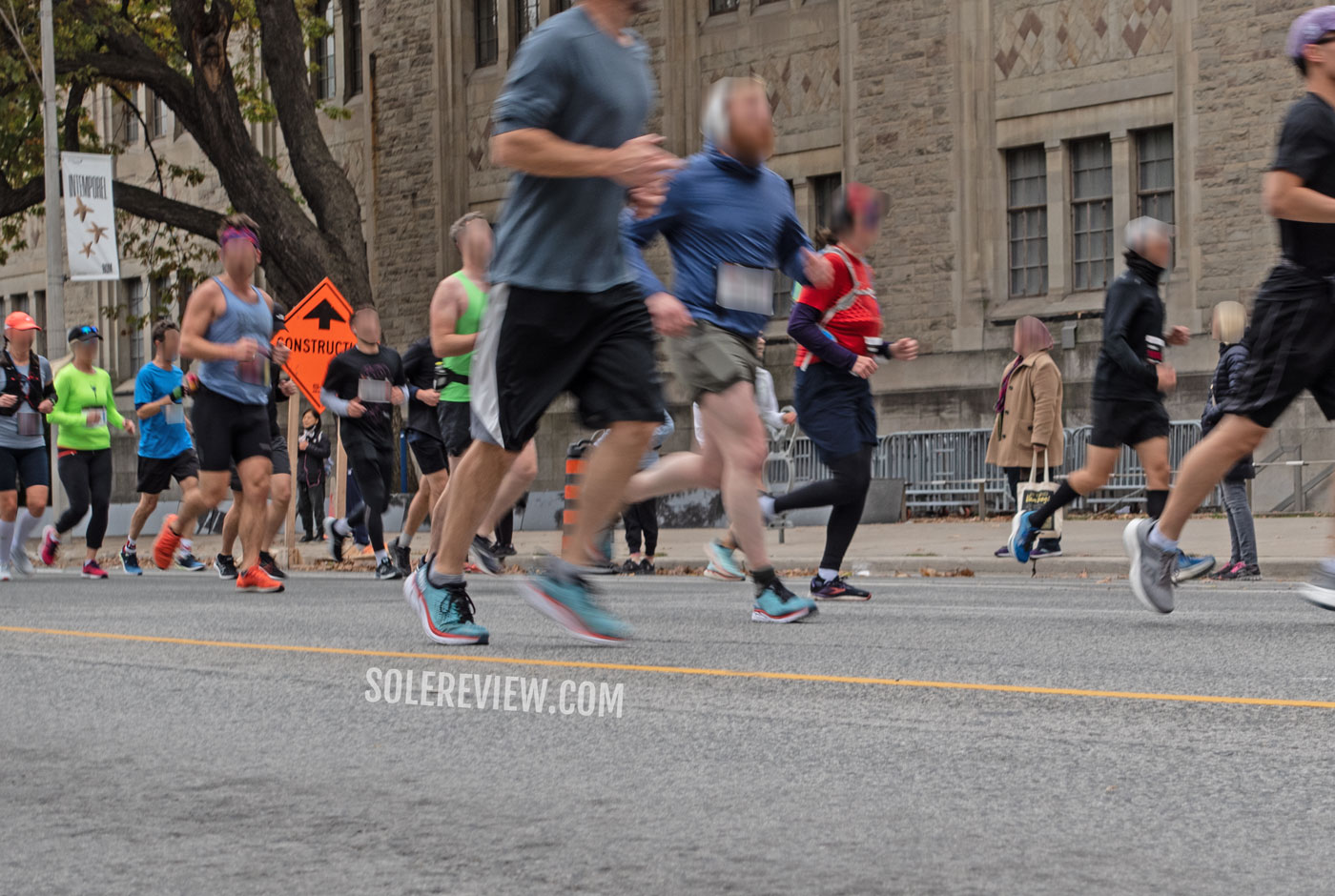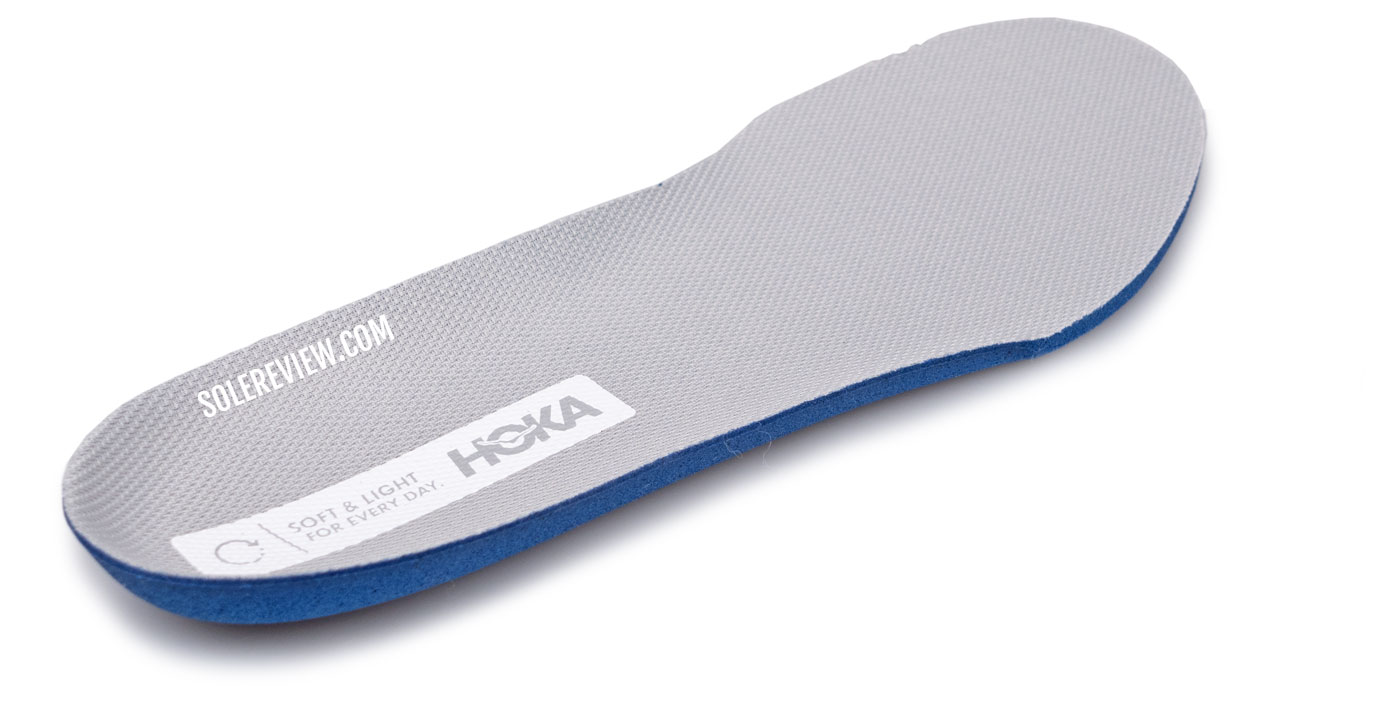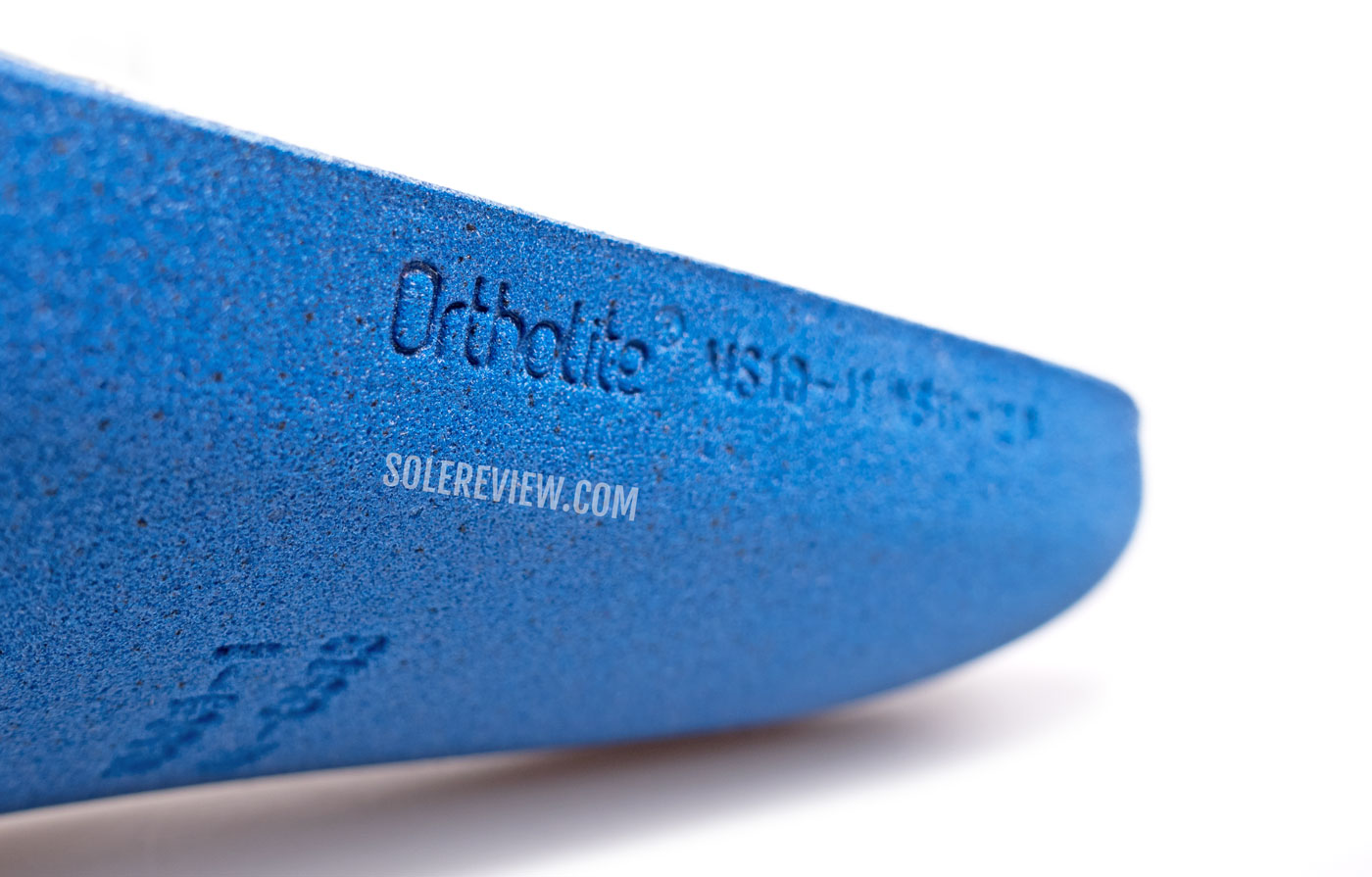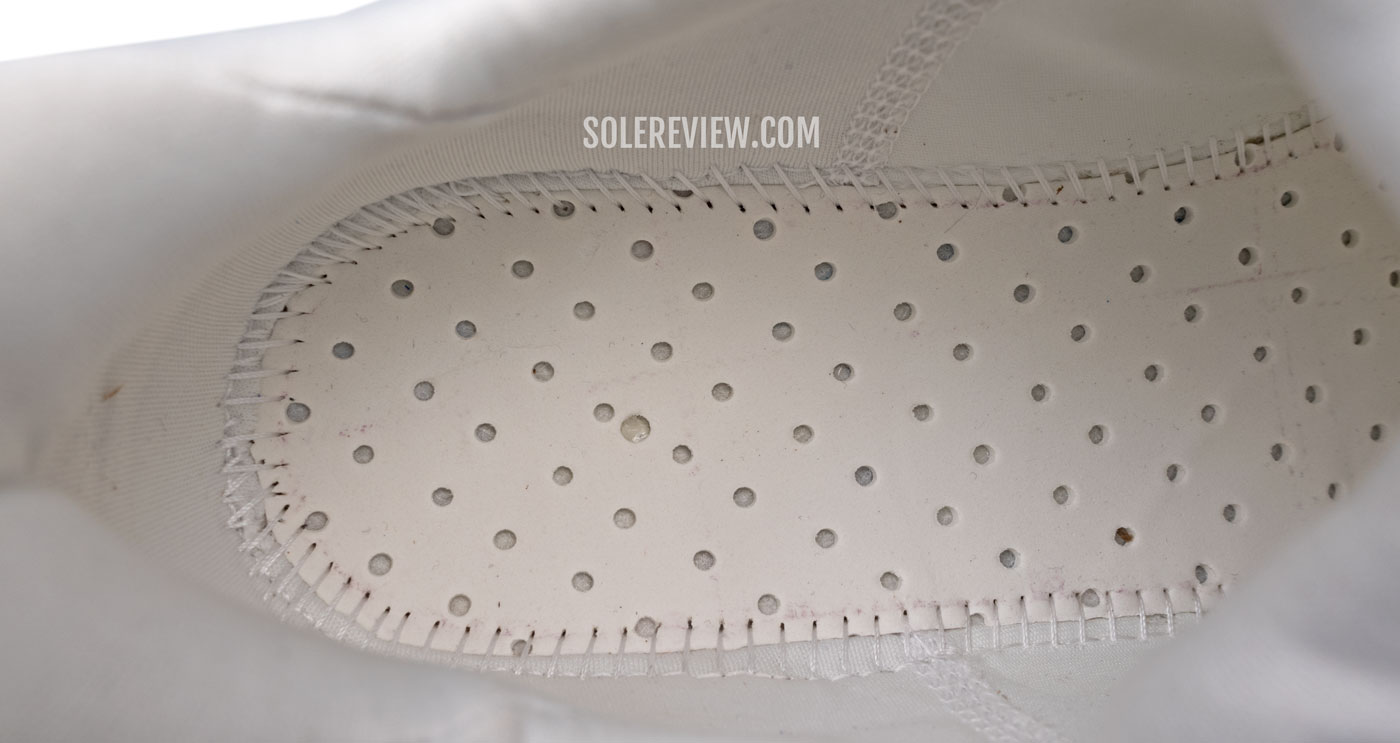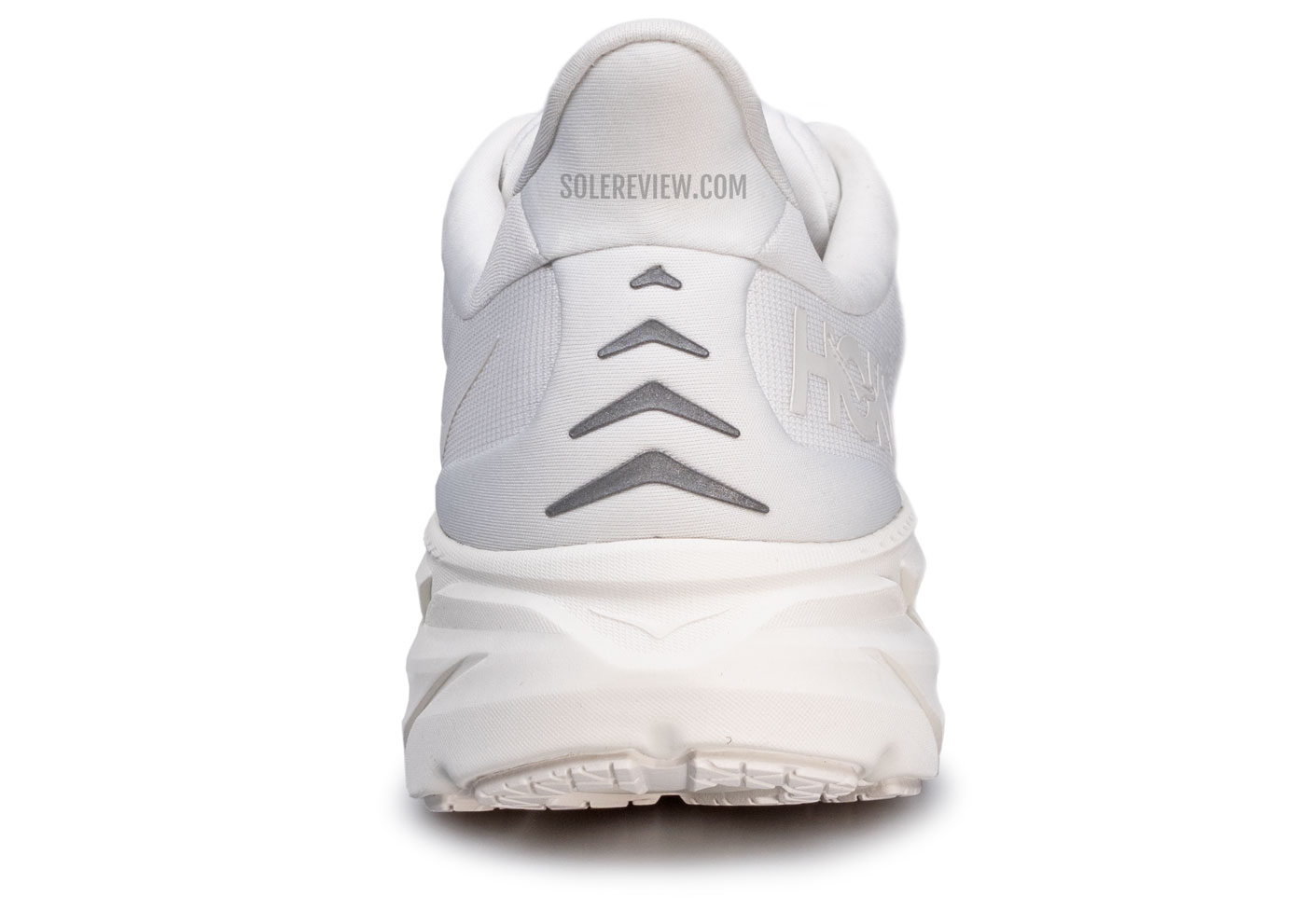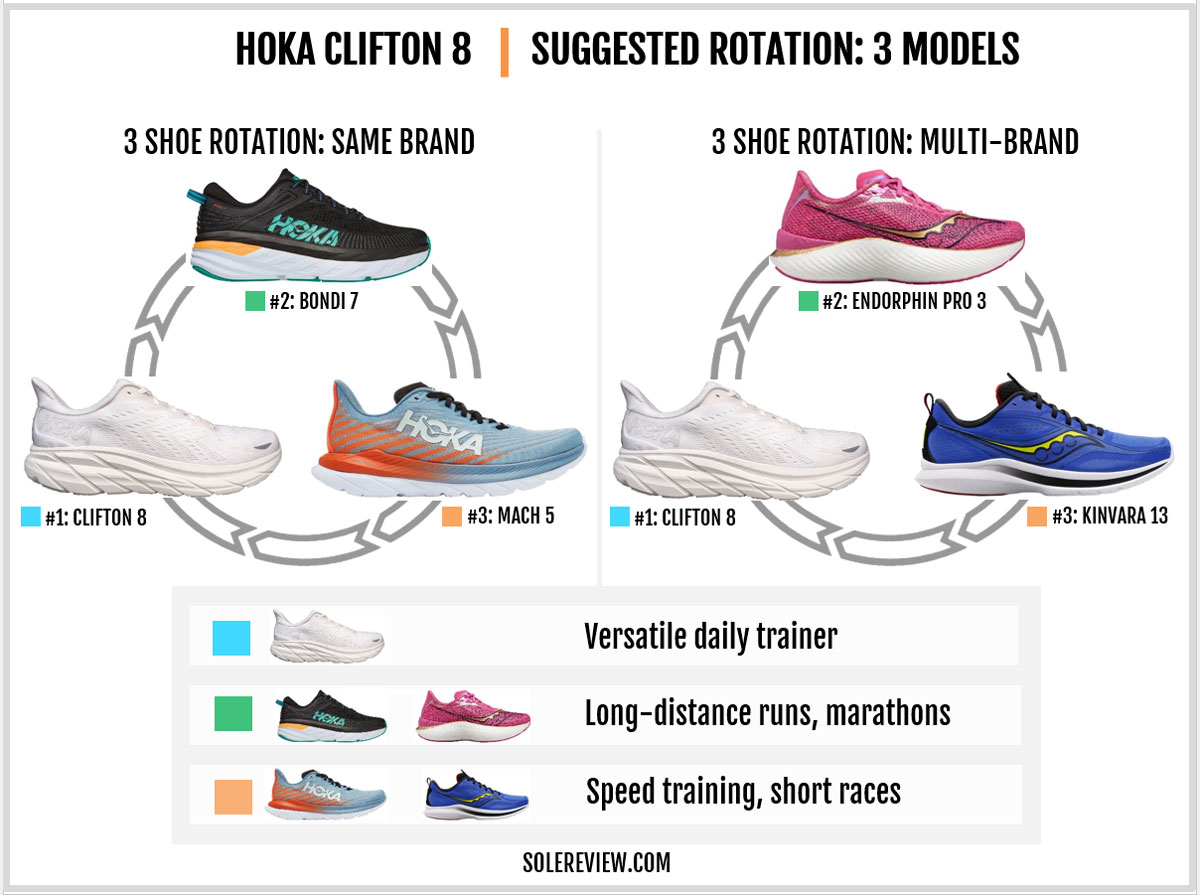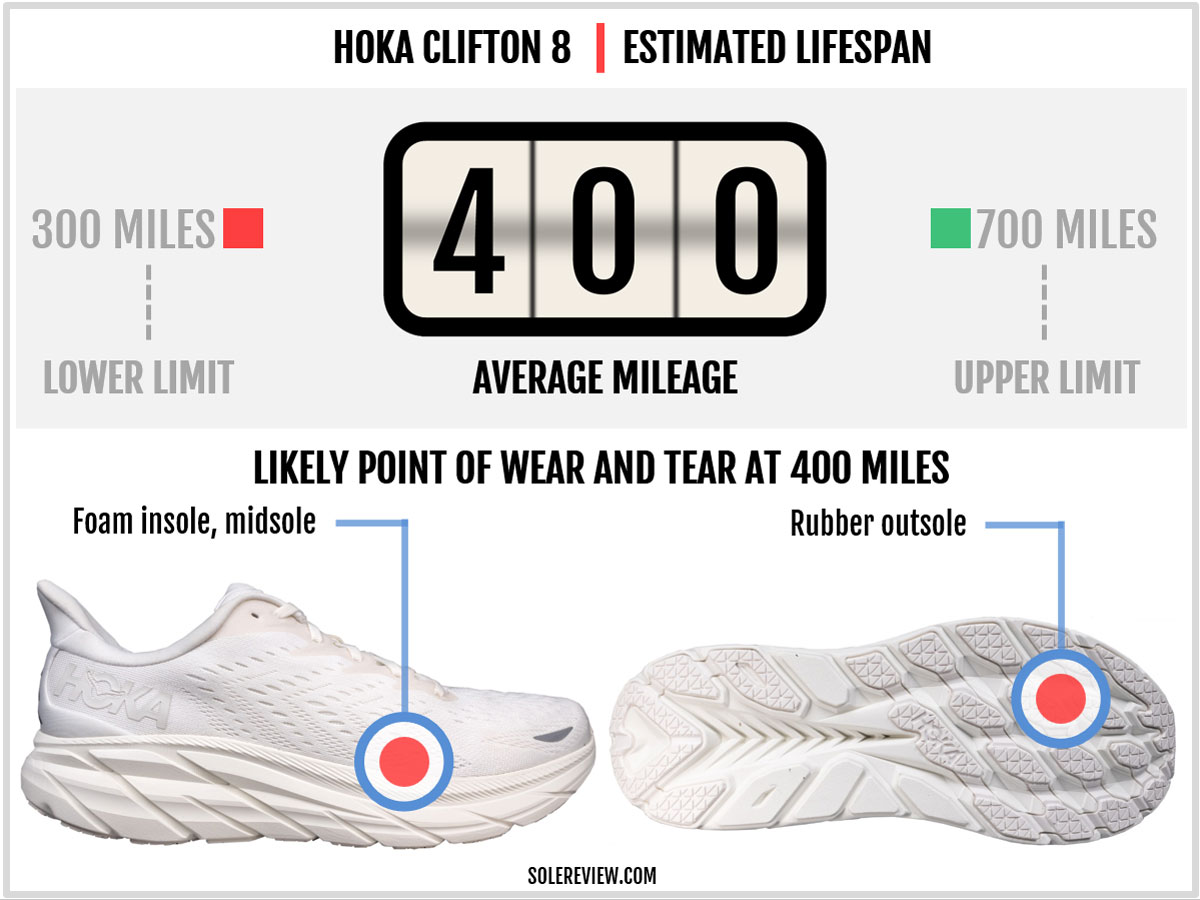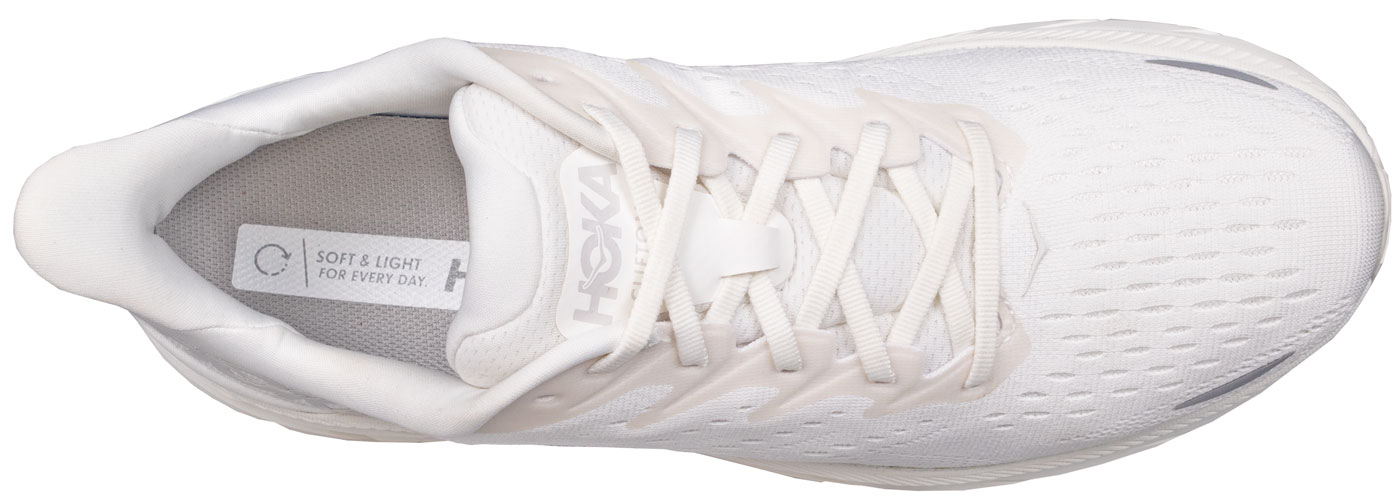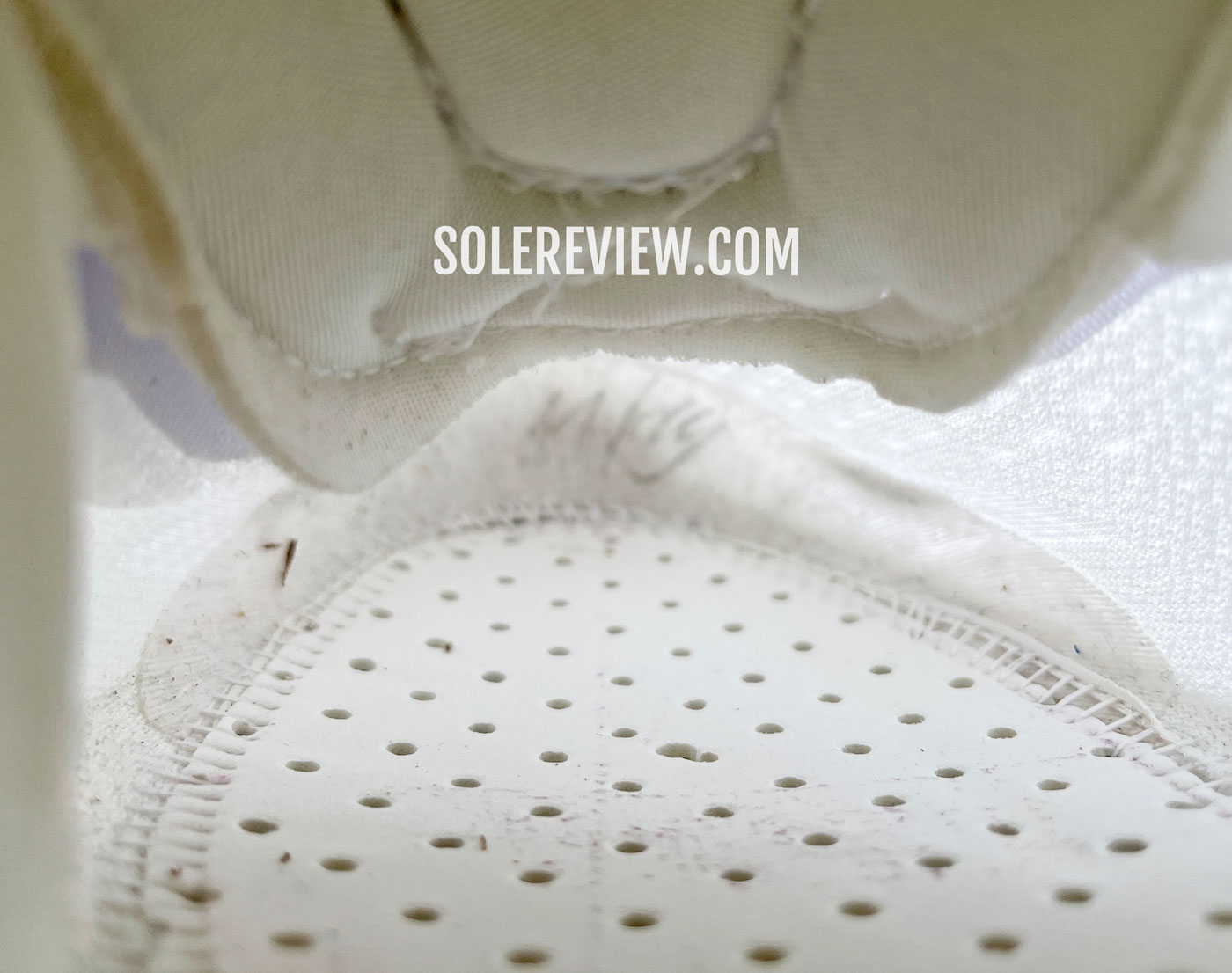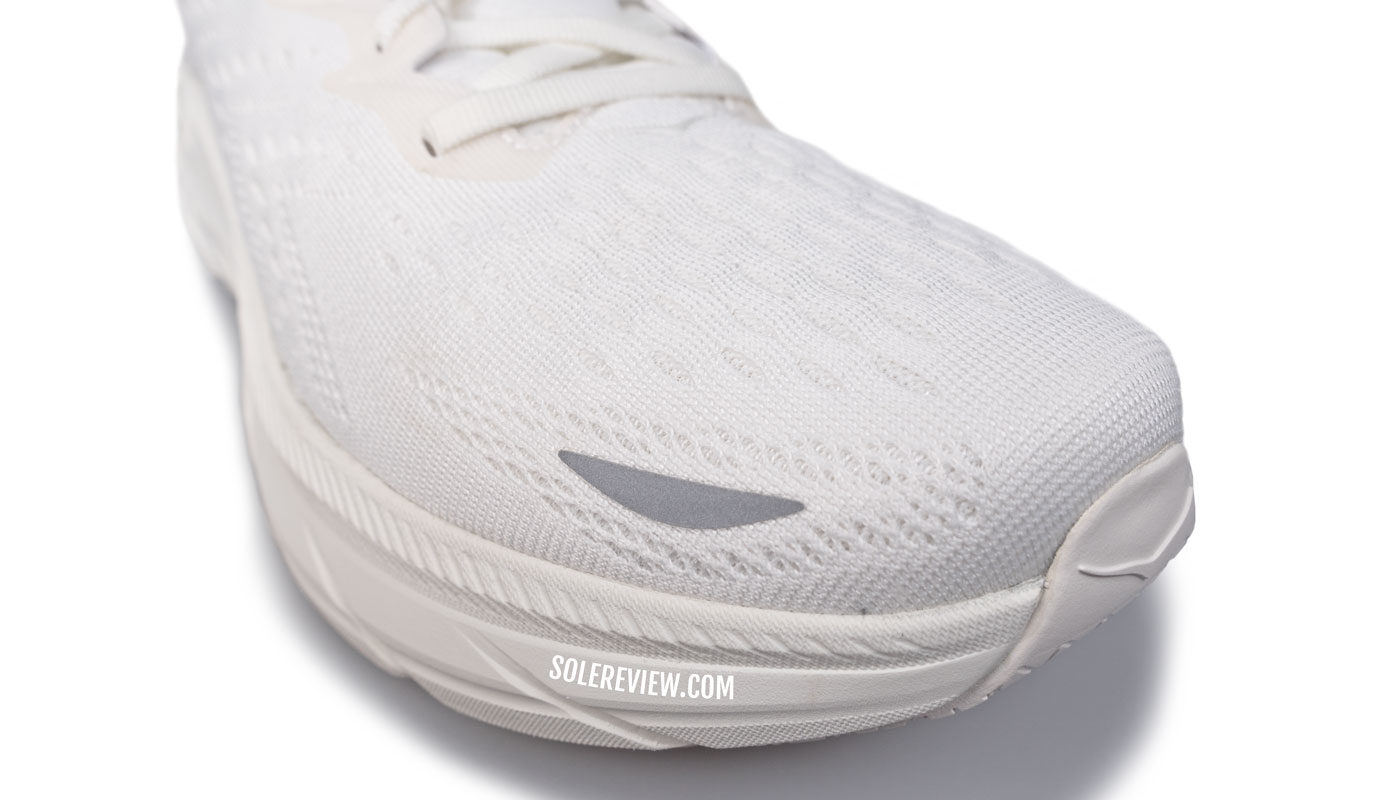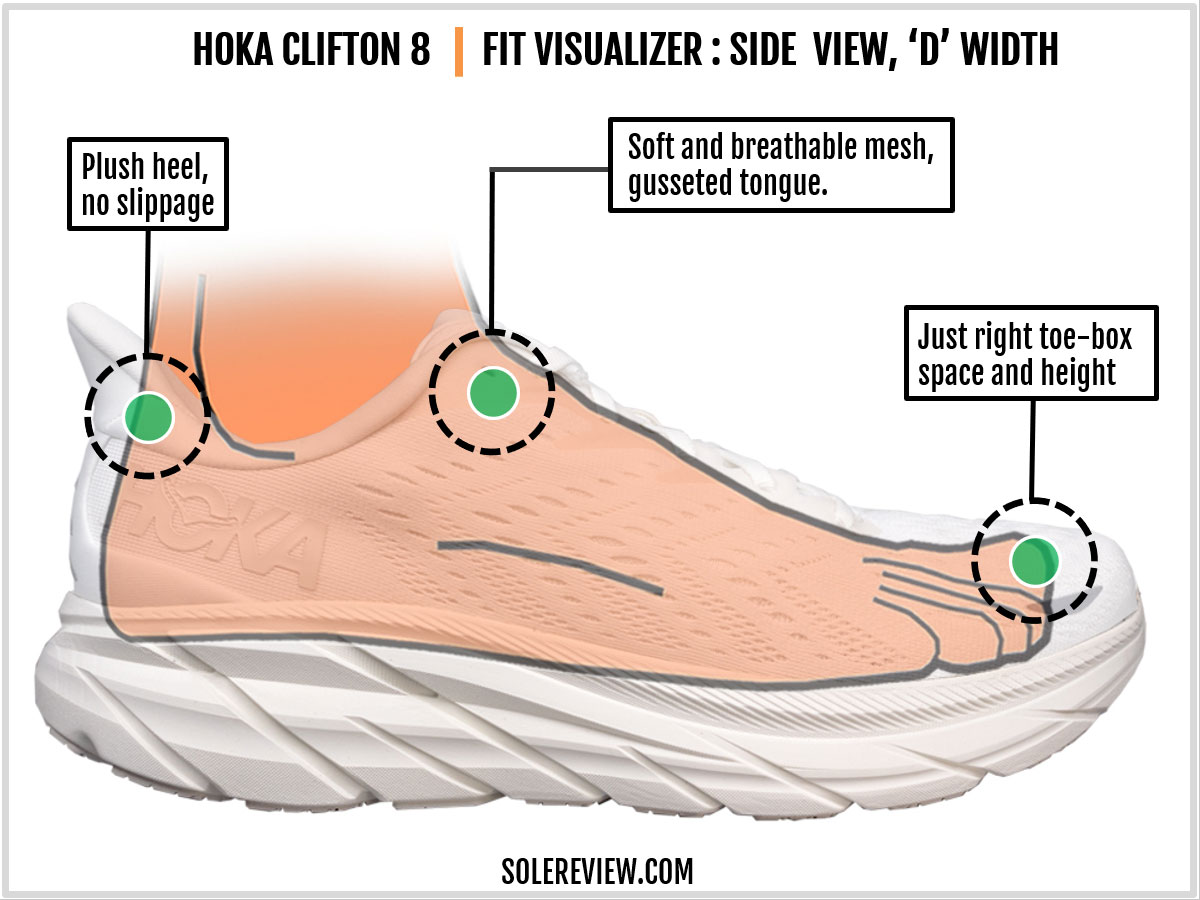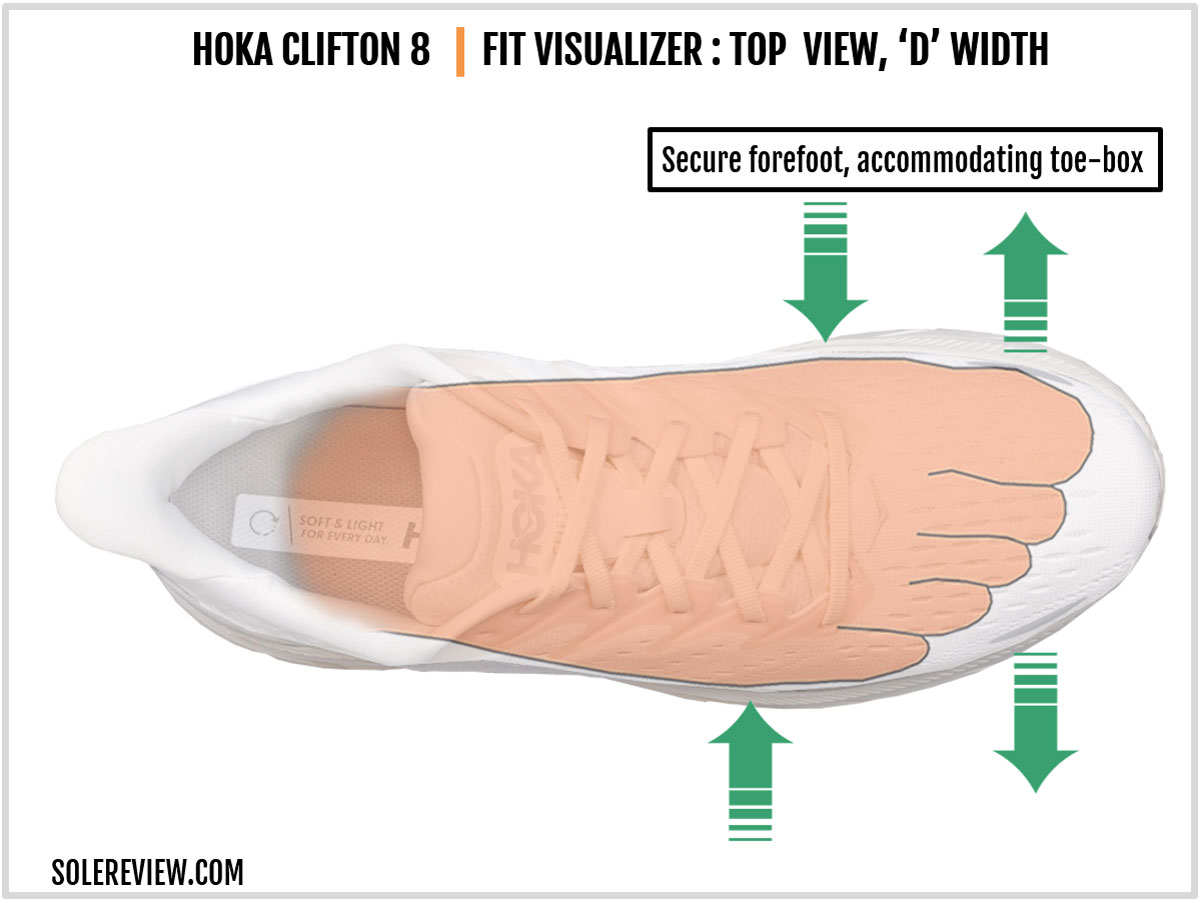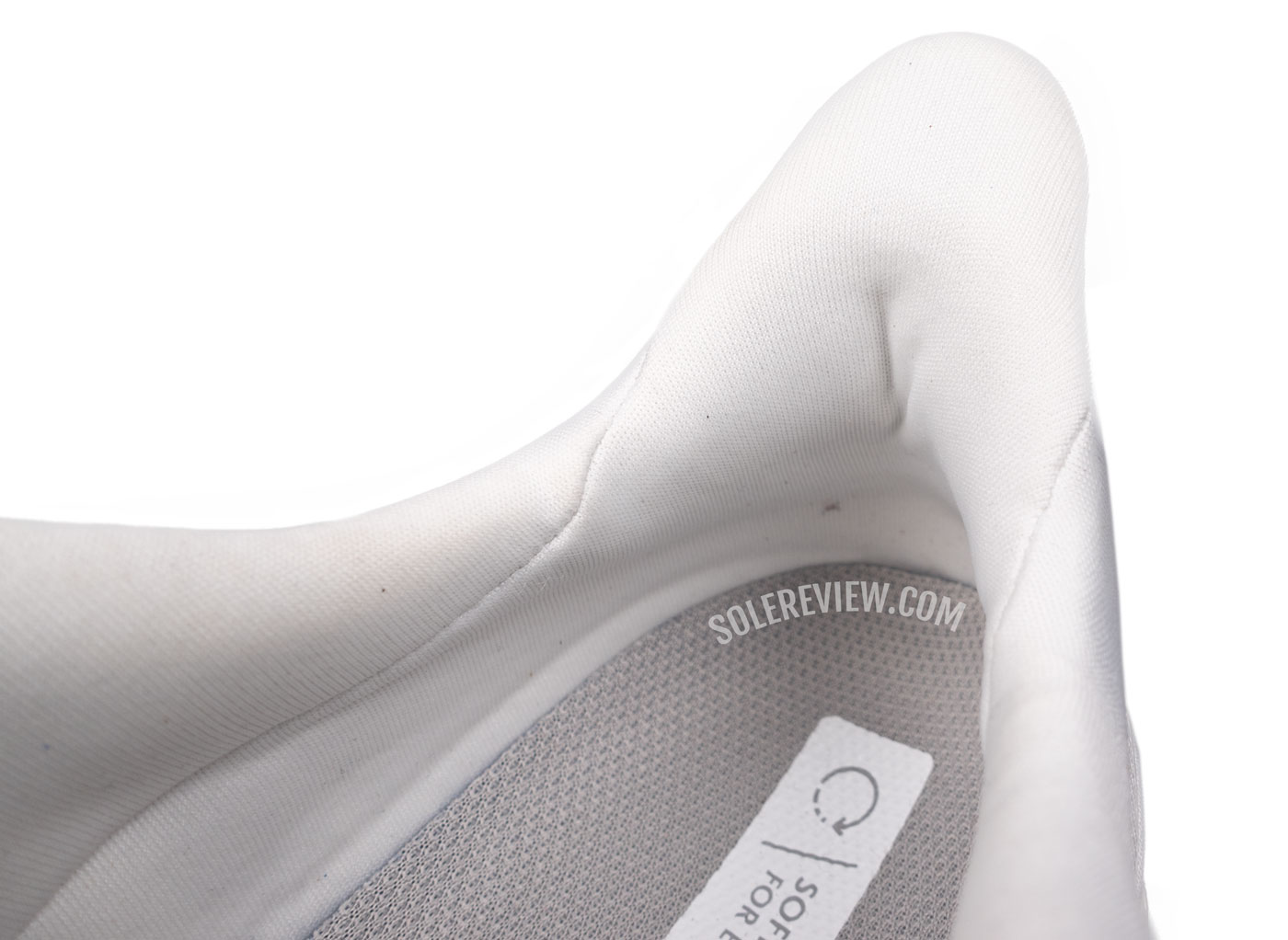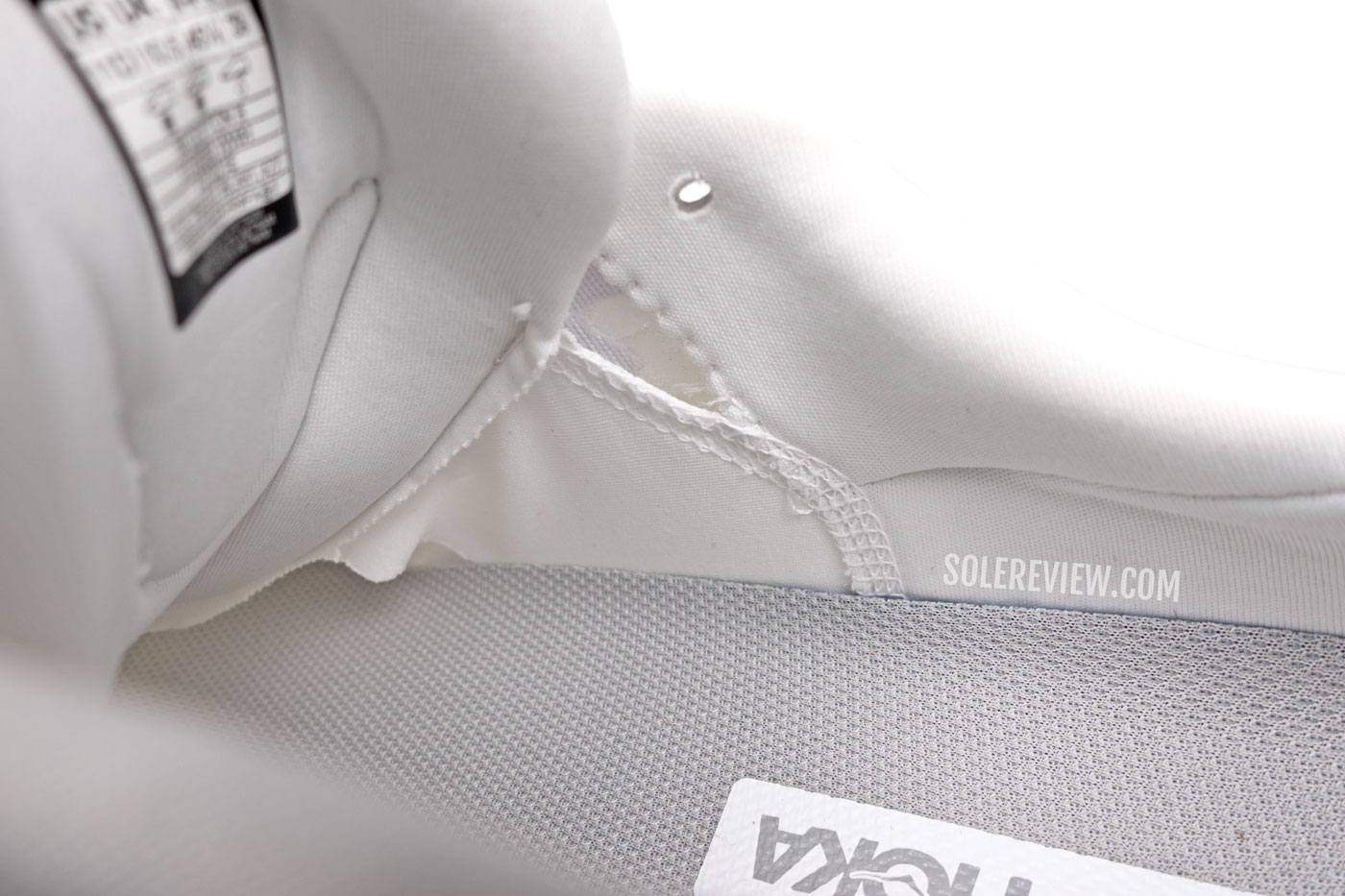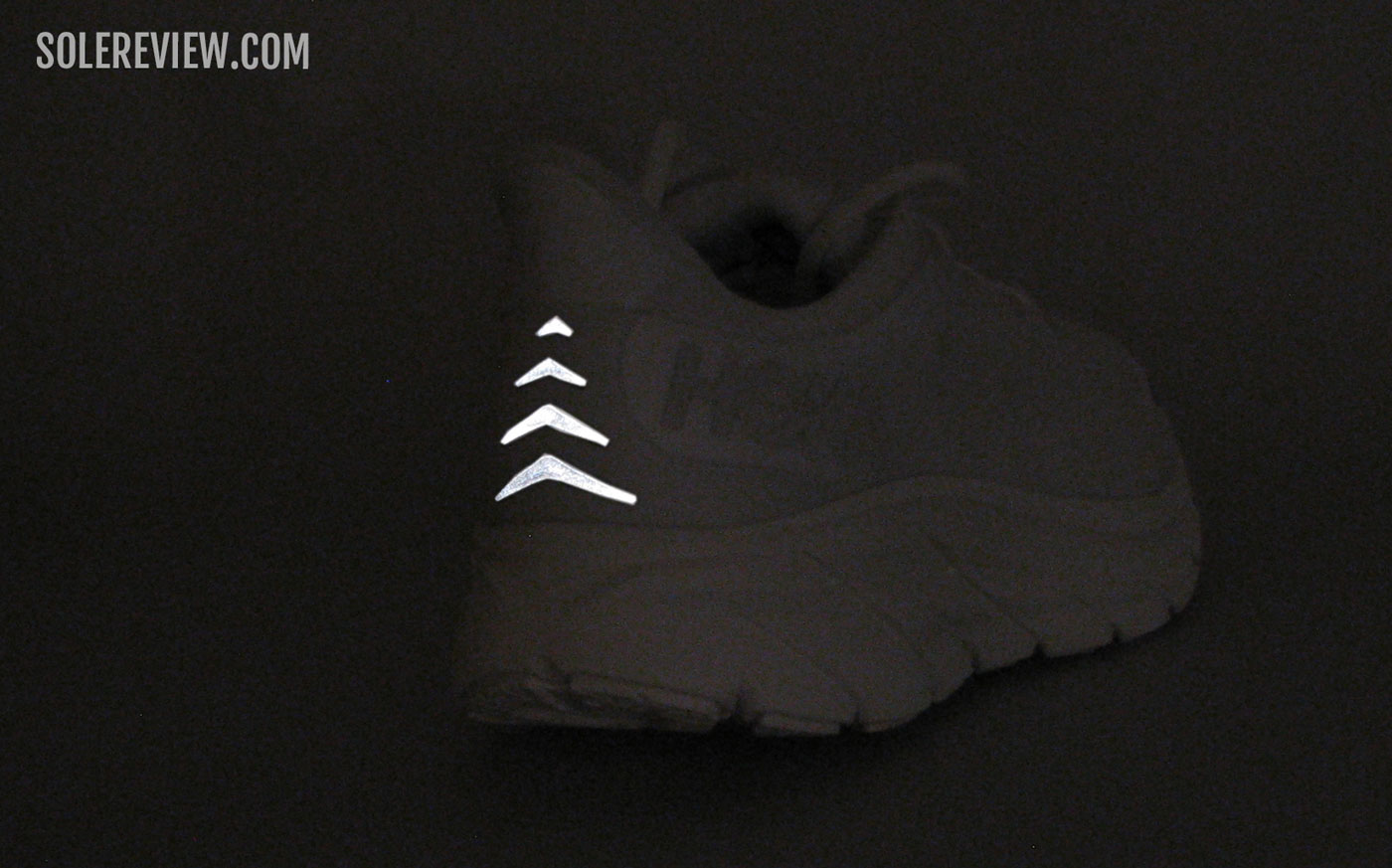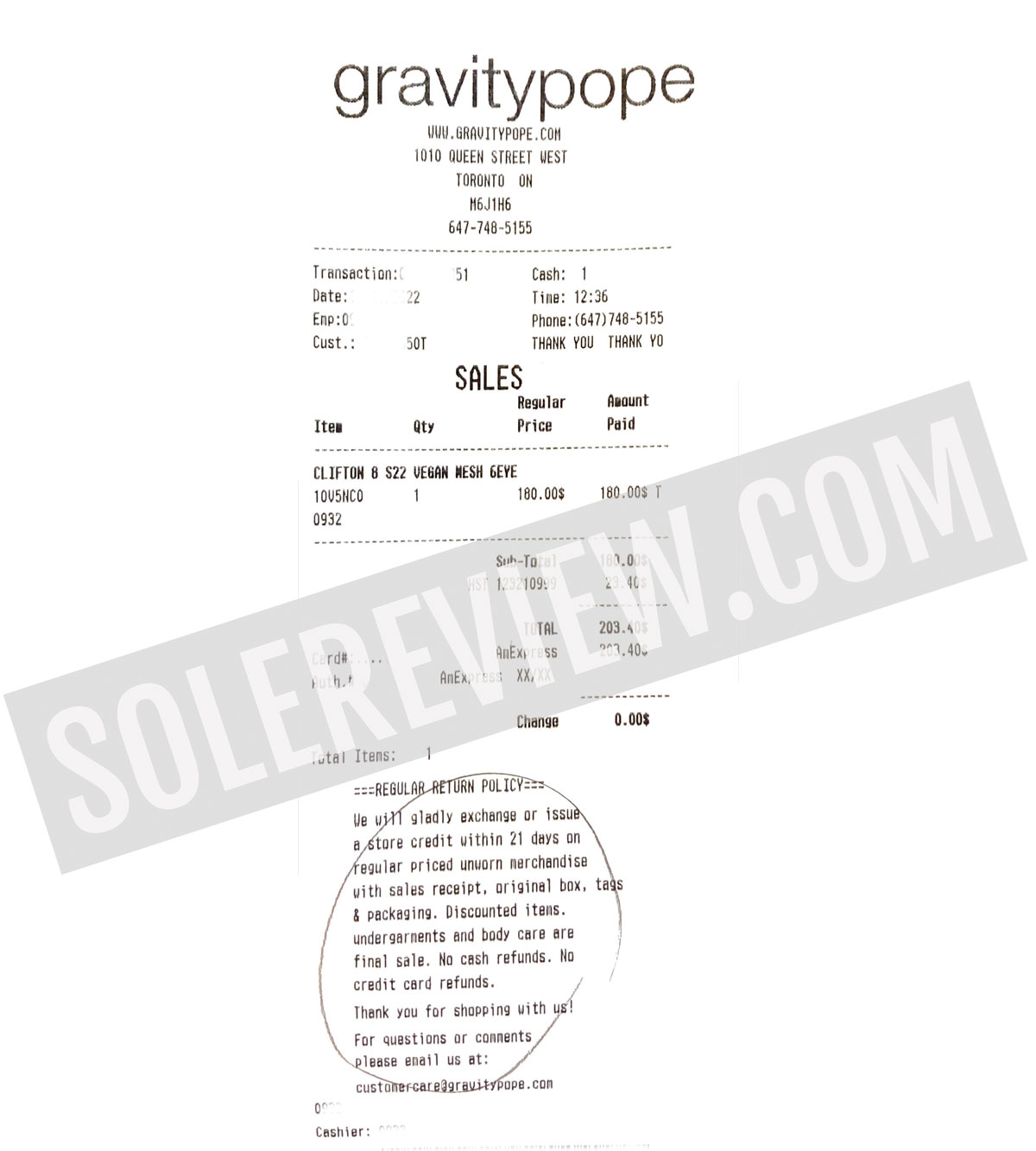
The Hoka Clifton 8 was purchased at full retail price for our review. The amount is in Canadian Dollars.
In this review:
SUMMARY AND VERDICT
If Hoka were to get rid of all its shoes and keep just one model, the Clifton would probably be it.
Eight years ago, the break-out success of the Clifton put Hoka on the map. The Clifton – and the Bondi to some extent – made Hoka One One a mainstream running shoe brand.
Our 2014 review of the original Clifton explained what made the shoe so good. The Clifton was one of the first shoes to combine the ‘rocker midsole’ form factor with a thick, yet lightweight midsole. The Clifton managed to accomplish what very few others did – being a cushioned shoe that did not feel slow.
Back then, those kinds of running shoes were a rare sight. Shoe choices were most binary – you either chose a soft shoe like the Asics Nimbus or a firm speed racer like the adidas Adios or Nike Zoom Streak.
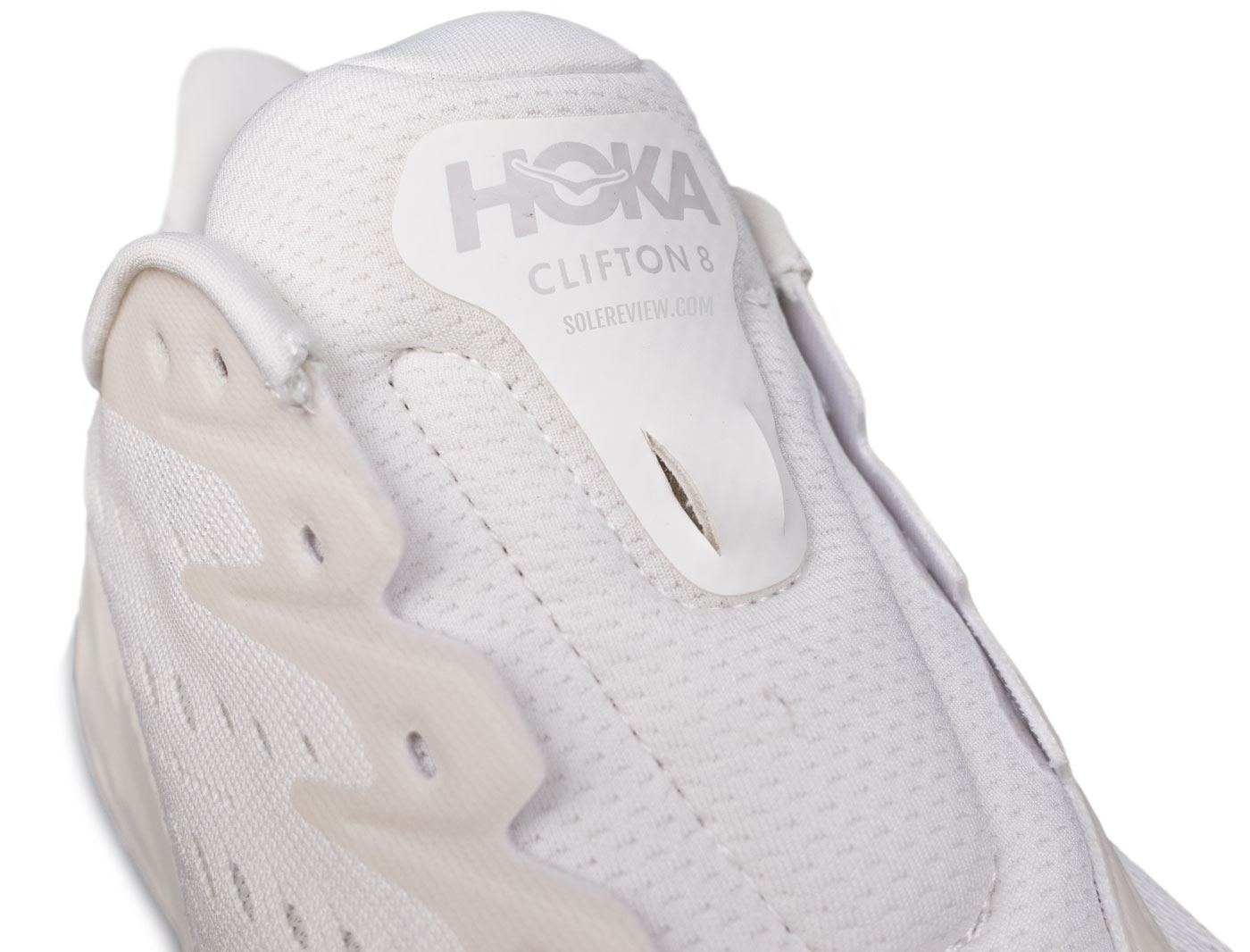
The Hoka Clifton has established itself as a versatile trainer over the years, and the Clifton 8 builds on that reputation.
Looking back, the Clifton owed its success to its versatile ride quality. It was comfortable enough to be used as an everyday trainer while being quick enough for tempo runs and marathons.
For better or worse, Hoka has taken the adage ‘if it ain’t broken, don’t fix it’ to heart. The Clifton 8 feels like a highly refined version of the 2014 Clifton, but its underlying traits haven’t changed.
Like all the Cliftons that came before it, the Clifton 8 uses a rocker EVA foam midsole to deliver a cushioned and stable ride with smooth transitions.
The lightweight ride is sufficiently comfortable for long-distance runs, and the rocker shape is excellent for building tempo. It can go as quick as 4:00 min/km (6:30 min) and as slow as you want. If you want to use the Clifton 8 as a walking shoe, it’s perfect for that as well.
The Clifton’s upper fit is the result of gradual improvement over the years, and it shows. The true-to-size upper is breathable, lightweight, and soft yet secure.
In short, it’s a good shoe to do it all. Its $140 retail makes it decent, if not great, value for money.
However, the Clifton 8 lacks the bouncy softness of new midsole foams, so it’s best to temper expectations.
THE HOKA CLIFTON 8 COMPARED WITH CLIFTON 7
The Clifton 6 and 7 had the same midsole, so it was about time the Clifton 8 got a new one.
And it does. Though the ride is very similar, there are noteworthy changes. The first is the marginally firmer ride; the second is the increased outsole rubber coverage.
The transition groove under the heel is not as wide as the 7, so that results in a firmer rearfoot feel.
The rubber lugs under the forefoot are now joined by a narrow strip, something that the Clifton 7 did not have. As a result, the forefoot traction is slightly better (not that the Clifton 7 did not grip well) but the landings and transitions have a firmer feel.
While the upper fit hasn’t changed, the Clifton 8 uses a softer mesh shell with fewer synthetic overlays. For example, the toe-box no longer has the TPU strips of the Clifton 7. Even the lining used on the 8 has a softer hand feel than before.
Like most recent running shoes, the Clifton 8 is now a $140 shoe, making it $10 more expensive than before.
The bottom-line being – the Clifton 8 doesn’t offer a significant performance advantage over the Clifton 7, but we prefer the plusher upper of the newest model.
THE MIDSOLE DESIGN AND RIDE EXPERIENCE
The Clifton’s ride lacks the sensory fireworks that we’ve come to expect from high-performance materials like PEBA (Nike ZoomX, Saucony Pwrrun PB) and their kind.
The compression-molded EVA midsole is easy to read. It’s not very soft, nor too firm. There isn’t any noticeable ‘bounce’ or springiness either, at least when benchmarked against contemporary standards.
What we get is a no-nonsense ride quality with plenty of comfort and transition-friendly smoothness. The single-density foam stack has an evenly-distributed cushioning feel without any break.
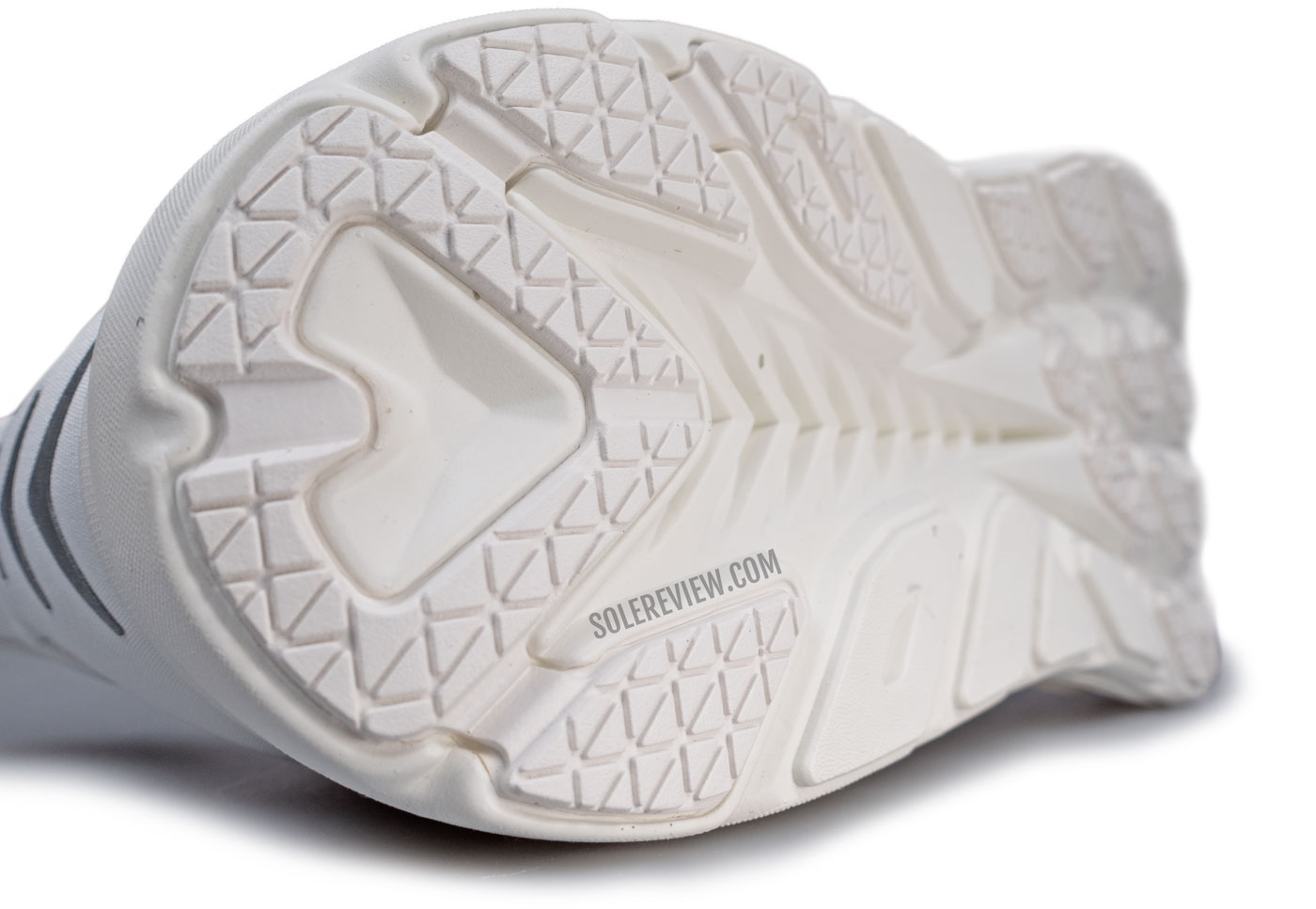
The transition groove keeps the weight centered during the gait cycle. It’s narrower than what the Clifton 7 had, so the ride is firmer as a result.
Here, the outsole layout also helps. Except for the transition groove under the feel, the foam pods and rubber lugs cover the entire loading area.
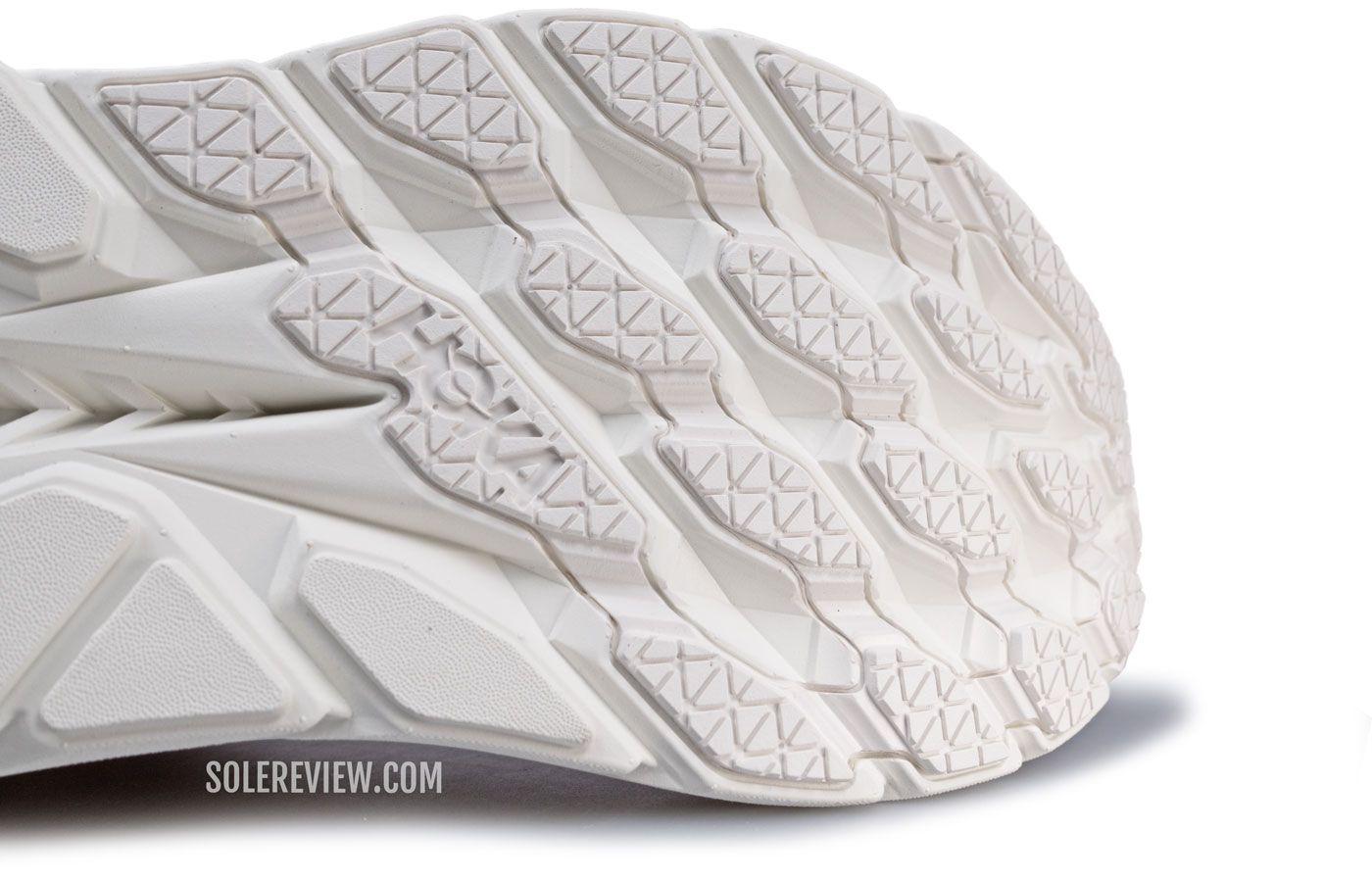
The rubber lugs are joined only by thin strips, and that allows the outsole to flex together with the midsole.
The lugs are also separated by flex grooves, so the rubber outsole doesn’t add any stiffness.
The lugs are mounted on the foam pillars, so that results in a pistoning or telescoping effect. In simple English, the outsole blends into the cushioning rather than working against it.
On the road, the Clifton 8 behaves as it always has. The high toe spring and beveled heel help the cushioned midsole to load smoothly during the gait cycle.
The thick forefoot is inflexible, and that works to the Clifton’s advantage. The roll-offs happen efficiently during the take-off phase, and partly what makes the Clifton 8 quick enough for tempo runs.
The channel or groove under the heel also keeps the transition smooth by keeping the weight centered. The 5 mm heel-to-toe offset works together with the rocker midsole to make forefoot/midfoot landings easy.
Besides everyday runs, the Clifton 8 also works as a long-distance cruiser. While it doesn’t feel as quick as Carbon-plated racers, the rocker midsole doesn’t struggle even at 4:00 min/km (6:30 min/mile) speeds.
The Clifton weighs 8.9 ounces (252 grams) for a US 9, so it’s lightweight even by modern standards. It’s far easier to run higher-paced workouts in lighter shoes, and this shoe is a good example.
Like most EVA foam midsoles, the ride feels fully ‘settled in’ after putting in 20 miles or so. While the Clifton is comfortable enough straight out of the box, this break-in period ensures a smoother working of all the different components.
The Ortholite insole and foam lasting add a bit of softness right under the foot.
In its early years, the Clifton used a flatter insole made of smooth EVA foam. That’s no longer the case; there’s a cushioned Ortholite footbed over the midsole.
With a balanced midsole design, the Clifton 8 doesn’t have any cushioning bias. This is a running shoe with a neutral and supportive ride; the inner midsole also has a slight flare that supports the arch.
And unlike the Bondi 8, the soft edges of the midsole do not rub the arch.
RECOMMENDED ROTATION
If you limit your rotation to Hoka, then the Clifton 8 and Mach 5 will take care of all your road training needs.
In an ideal world, we would have recommended the Bondi 8 as a slower yet more cushioned alternative to the Clifton. However, the Bondi 8’s stiff midsole edge dilutes the ride comfort, so we recommend the Bondi 7 instead.
However, since the Clifton 8 also works as a long-distance cruiser, so the Bondi is a nice-to-have and not a must-buy. For speed runs and short races, the lightweight Mach 5 rotates perfectly with the Clifton. Alternatively, the Saucony Kinvara 13 also works well as a shoe for short races.
And what’s a marathon racer without a Carbon plate and PEBA foam midsole? If that’s what you’re after, the Saucony Endorphin Pro 3 is just the shoe. The Endorphin Speed 3 (with its Nylon plate) is the less expensive yet equally competent alternative.
IS THE HOKA CLIFTON 8 DURABLE?
A runner will typically get 400 miles out of a Clifton before noticing any degradation in performance, and we expect the Clifton 8 to be no different.
While the compression-molded EVA foam midsole will get creased over time, it will deliver the expected levels of ride comfort for several hundred miles.
The upper build quality is similar to the Clifton 7, and there haven’t been durability-related concerns yet. Based on precedent, the upper lifespan should be equal to that of the midsole.
THE UPPER DESIGN AND FIT
Nice things have happened to the Clifton’s upper over the years. The fit evolved from being overly narrow to becoming more accommodating, thus bringing it in line with the industry standard for the regular (D) width.
The second change has been the addition of an optional 2E (wide) width – just in case the standard fit was too tight for some. Lastly, the overall construction and choice of meshes have vastly improved from what they used to be.
The Clifton 8’s upper is the culmination of all those changes, so the result is a pleasant one.
The true-to-size upper delivers a secure fit without squeezing your metatarsals, whereas the breathable mesh creates a comfortable wrap over the foot.
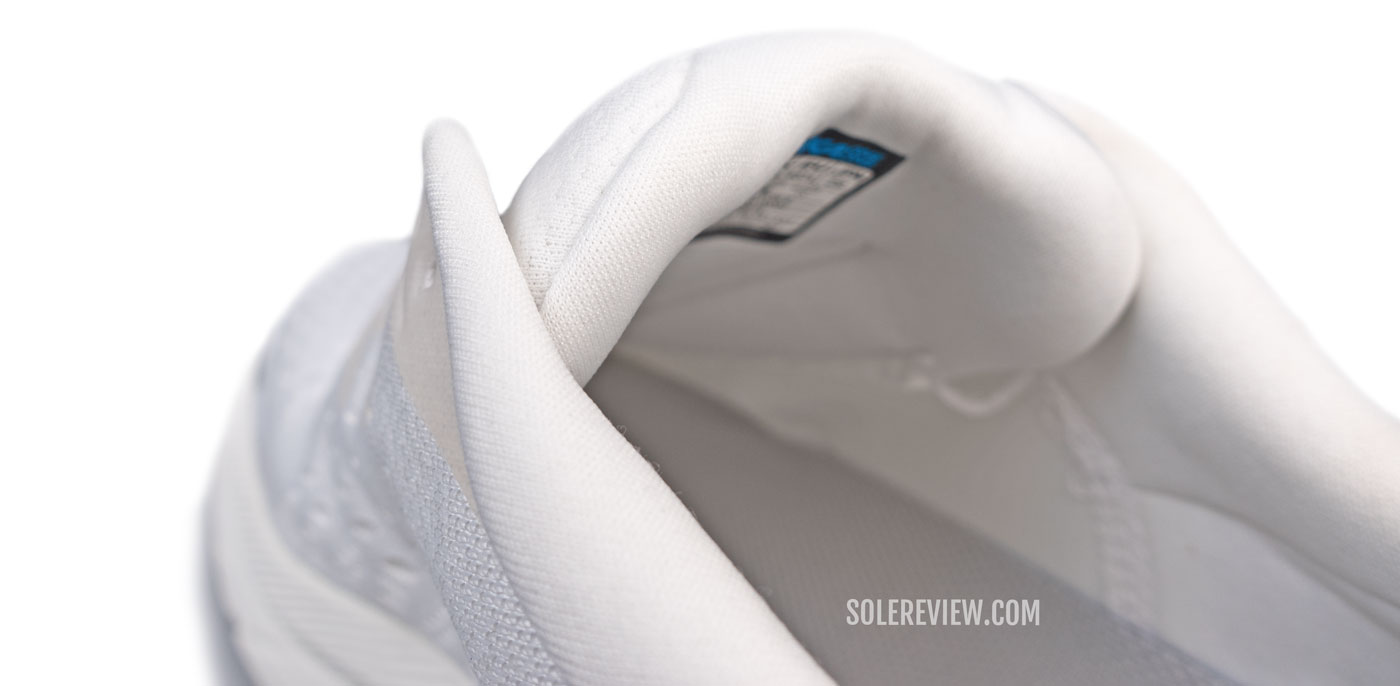
The padded tongue has just the right length, and uses the same plush lining as the heel. The top-down pressure from the soft laces is completely absorbed by the padded tongue.
The heel and tongue lining have a soft, buttery feel; the foam-filled collar and tongue grip the heel and instep without slipping. The tongue is attached to a gusset, so there’s no movement during runs.
Even the gusset is made of a soft, silky fabric with some amount of inherent stretch. The flat laces are soft and semi-stretchy; the quilted tongue is long enough for the runner’s loop to be used while absorbing the top-down lacing pressure.
The Clifton 8 has a decent amount of reflectivity in the front and rear. The stiff heel counter has a stack of reflective trims, and the toe box has a couple of them.
PROS AND CONS
The Clifton 8 is the best out of all the Clifton variants we’ve worn so far. The upper is extremely comfortable with just the right proportions – the interiors fit true to size and secure. The uber-plush meshes and linings elevate interior comfort.
The midsole isn’t made of modern super-foam, but it performs as advertised.
The thick midsole is comfortable enough for any distance, and the lightweight ride provides the versatility for tempo runs. The medium-soft midsole is supportive, and the outsole delivers reliable traction.
COMPARISON: THE HOKA CLIFTON 8 VERSUS HOKA BONDI 8
The published specs do a good job of telling us how the Clifton 8 and Bondi 8 differ. Not only is the Clifton 8 nearly two ounces lighter, but its midsole also has a much lower (-30%) volume.
The lighter weight makes the Clifton 8 more versatile than the Bondi. It doesn’t struggle at slightly higher speeds (say, at 4:00 min/km or 6:30 min/mile) as the Bondi 8 does. The upper is also more accommodating, breathable, and softer than the Bondi 8.
In our review of the Bondi 8, we called out the stiff midsole edges that created a hot spot under the arch.
The Clifton 8 doesn’t suffer from such flaws, so it’s more comfortable. This is ironic because the Bondi is supposed to be a better long-distance cruiser than the Clifton. While that applies to the Bondi 7, the Bondi 8 is a different story.
Under the circumstances, we recommend the Clifton 8 or Bondi 7 over the Bondi 8.
SHOES SIMILAR TO THE HOKA CLIFTON 8
There aren’t many running shoes like the Clifton – a lightweight trainer that’s deeply cushioned yet versatile enough for a wide range of use cases.
After applying that criterion, four shoes come to mind. Except for its slightly higher (8 mm) heel offset, the Asics Novablast 3 is as close as it gets to the Clifton. It weighs the same, is priced identically, and even the upper has a similar snug fit.
Like the Clifton 8, the Novablast 3’s cushioned midsole has a rocker profile that promotes smooth roll-offs. Also, the Novablast’s 8 mm drop doesn’t get in the way of forefoot/midfoot landings. That’s why we often say that the heel offset number is to be consumed with a large grain of salt.
All that said, the Novablast 3 has a softer and more responsive ride than the Clifton, whereas the Hoka model offers a higher level of stability.
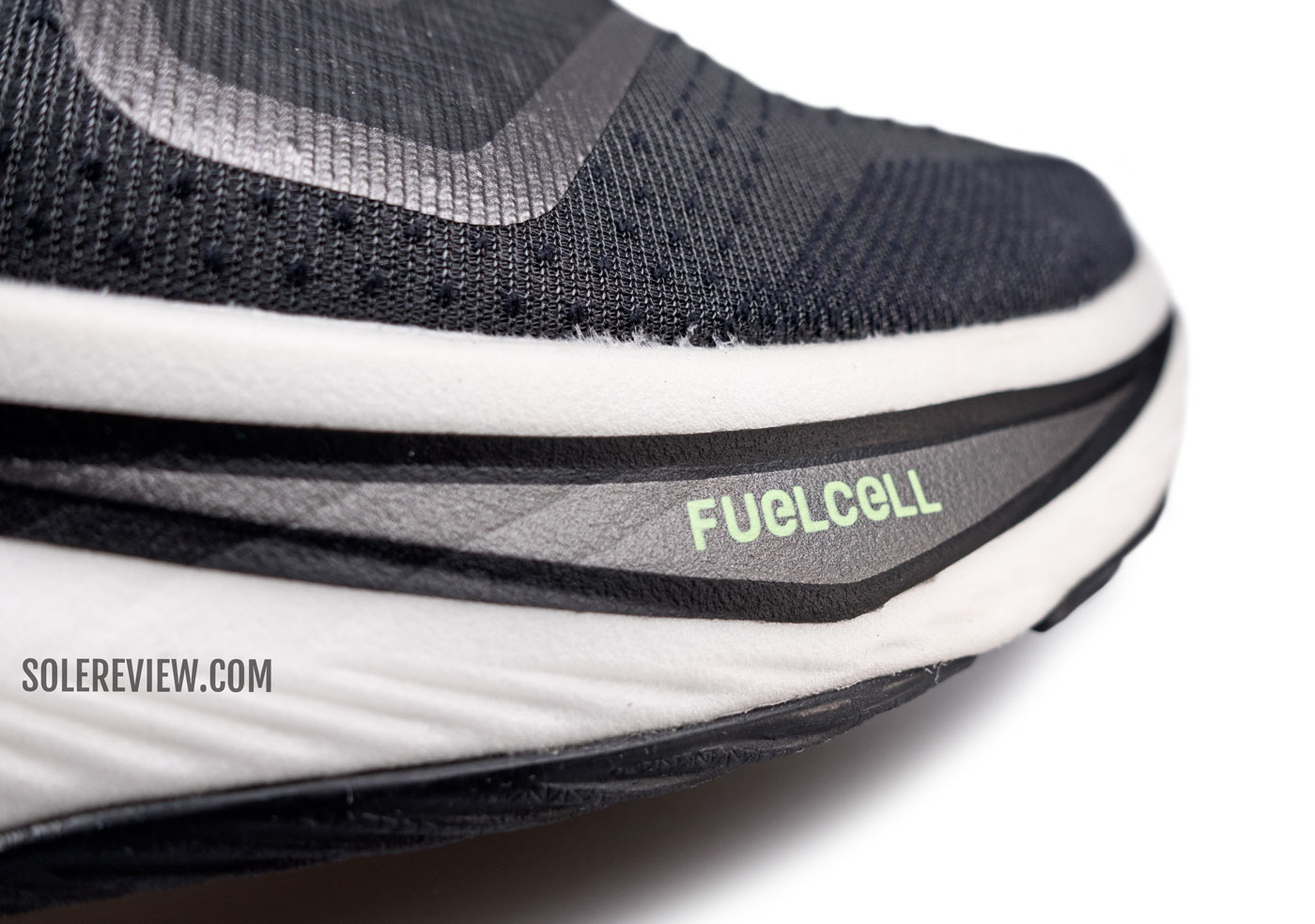
Though the Fuelcell Rebel V3 is a much softer and bouncier shoe, it does a great job of blending ride comfort with speed manners.
The second shoe that compares – at least on a conceptual level – is the New Balance Fuelcell Rebel V3. It’s much lighter (7.4-ounce), softer, and bouncier than the Clifton, but its midsole offers a blend of cushioning and speed-friendly road manners.
For a firmer ride, the Saucony Endorphin Shift 3 is worth trying. Unlike the Endorphin Pro and Speed, the Shift 3 uses an EVA foam midsole in a rocker profile.
Do you own this shoe? Improve this review by sharing your insights – submit a review here.

